#birth rashi
Explore tagged Tumblr posts
Text
Know Your Rashi: अपने नाम के पहले अक्षर या जन्म तारीख से जानें क्या है आपकी राशिKnow Your Rashi: आप अपने नाम के पहले अक्षर या फिर अपनी जन्म की तारीख से अपनी राशि के बारे में जान सकते हैं। तो इस लेख में जानें आपकी राशि क्या है।
#Know your rashi#know your rashi by name#know your rashi by dob#know your rashi by date of birth in hindi#know your rashi by name in hindi#my jyotish#Blogs Hindi News in Hindi#Blogs Hindi Hindi News
0 notes
Text
NAKSHATRA SERIES: OBSERVATION FROM DIFFERENT NAKSHATRAS

disclaimer: all of my observations comes from my observations on celebrities and my social circle who has this nakshatras. if you're offended just block me mwah 💋💋💋
ANURADHA
One of the most intelligent nakshatras that I know. Some would say that Saturn-ruled nakshatra comes from hard work, but may I add the intelligence in that.
Most of the time, I see this as an academically intelligent nakshatra for me.
(Unevolved) Anuradha women that I know are "pick me" girls. The Pick me definition of "they're like no other girls" and would do anything for men's attention.
Out of all the Saturn Vimshottari ruled nakshatras, this one has light-hearted vibes compared to Pushya and Uttara Bhadrapada, despite being the debilitation of the moon.
They hold grudges just like the sidereal waters would do, but the reason why Mars is debilitated in Cancer is that the anger that Cancer harbors is more detrimental to them, unlike in Scorpio. Yes, they will harbor anger, but they use that as motivation, and they are not "stuck" towards the past. Also, their approach to the problem is better than that of Cancer, which is passive aggressiveness.
They're more into connections and friends really. If you have an Anuradha friend, They're really great and loyal.
JYESTHA
The characteristics I notice of Jyestha are strategic in life and their goals. Most of them have it.
When you're literally in a competition and your opponent is Jyestha. (ANY COMPETITION)
The deity of this nakshatra is Indra. No wonder they're literally on the top (besides Magha).
Weakness of this nakshatra? Ego and pride. To a certain extent, they're literally prone to sabotaging because of arrogance and being boastful. Most of us would agree that they're on the top, but they can attract enemies more than anyone.
f you want a guru/mentor about life (or skills in general), go to Jyestha!!!! They're literally OVERACHIEVERS!!
Jyestha natives, how can you all be so mature and childish at the same time?? I can't explain it, but you can observe this with your Jyestha friends/family
They have ties with the organ/piano instrument. Like the actor who played Davy Jones, who is a Jyestha sun.
MULA
You know how some nakshatras are so different yet also alike at the same time? Yes, I'm talking about Gandanta nakshatras (Revati - Ashwini, Ashlesha - Magha, and Jyestha - Mula).
Jyestha and Mula share characteristics that are the same for me: - The females I know are into spirituality (astrology, tarot, etc.). - They're both BLUNT and CUTTHROAT, especially the men with this nakshatra. - The billionaire nakshatras. Many rich people have Jyestha and/or Mula nakshatra. The difference is Mula is preachy (tied to Sagittarius rashi) while Jyestha is more factual or shares trivia.
Fun fact, Pope Francis has Mula sun. You know? Jupiter (Sagittarius ruled planet) tied to religion, beliefs, teaching, etc.
Ironically, Mula nakshatra (UNEVOLVED) are some of the unethical people that I know (personally and celebrity-wise). Jupiter + Ketu correlation. (Mastery towards wealth and expansion (Jupiter) and detachment of ethics/unhinged beliefs (Ketu))
In terms of animals, they really are the true animal lovers out there.
I've seen many Mula and Krittika nakshatra couples lately. I wonder why, and I haven't really an explanation for this.
Out of all the Ketu-ruled nakshatras, this one is consistent for portraying gay people, even though they're straight (Billie Eilish, Maya Hawk), especially women with this placement.
Purva Ashadha
Sidereal Sagittarius are preachy including this nakshatra!!!!!!
They're using humour to teach (just like common gurus do)
They're really great in color red (Purva ashadha looks great at color red because the birth nakshatra of Mars is Purva Ashadha)
Conflict between their philosophical beliefs about material world is a common problem
This nakshatra really great for standing up for yourself.
Ironically, Even though this nakshatra is Venus ruled vimshottari nakshatra, The Men who has this nakshatras are some of the worst misogynistic people that exist!
Great at arts especially drawing, painting things like related to visual.
Men with this nakshatra are WOMANIZER
Women with this nakshatra are intimidating compared to other Venus vimshottari ruled nakshatra.
Uttara Ashadha
Women with this nakshatra often have nude scenes in movie. Ex: Angeli Khang, Sydney Sweeney (both have uttara ashadha moons)
Uttara ashadha means latter victory, but it doesn't mean "late success". Ishowspeed has this sun and at the young age, as i was typing this, he's streaming and travelling different countries.
Uttara ashadha are common for gay people. (Looking directly for Caitlyn Jenner and Lil Nas X) If that makes sense.
They're also coquette pink and very girlish. If "sun" nakshatra comes to mind people would think "masculinity, strongest, fierest" but then you see the actual people who has this and very FEMININE AESTHETIC.
The stereotype that i find true to this nakshatra is they're independent and successful. If you're Uttara ashadha native and you feel you are not that successful, trust me it will happen!!
#astrology notes#vedic astro notes#astrology observations#vedic astro observations#claire nakti#vedic astrology#sidereal astrology#pick a card#magha nakshatra#vedic chart#uttara ashadha#purva ashadha#mula#jyestha#anuradha
498 notes
·
View notes
Text
The Top “MEAN GIRL” Placements In Astrology 💄🎀👱♀️

Considering the most popular films & tv shows, with the quintessential “mean girl” character. I gathered the birth chart info of the actresses who played these characters.
Here’s the TOP 5 key placements that were seen in multiple charts of the actresses that played these roles.
*Using Vedic Sidereal Astrology*
Considering: Sun, Moon, Ascendant and Atmakaraka placements

#1 MRIGASHIRA NAKSHATRA
Mrigashira seemed to dominate in the archetypal “mean girl” roles. With this being a Mars ruled nakshatra these natives are naturally assertive and provocative. They simply aren’t afraid to say really blunt things, and speak harsh truths. They’re extremely intelligent and have sharp mental dexterity. They identify the intellectual weakness in others and exploit it cleverly. They’re great at being “mean” yet seeming to get away with it most of the time. They’d insult someone right to their face without them even knowing it. They always have witty clapbacks and comebacks, making them comical when delivering insults.
Perhaps most famous “mean girl” character of all time: Regina George played by Mrigashira moon native: Rachel Mcadams is a good case study on Mrigashira’s brand of “mean”. In the movie she is admired and fawned over by many despite being a mean girl. People just accepted it and even were eager to be treated badly by her. This is due to the natural charm and magnetism these natives have that make their not-so-nice behavior seem forgivable.
#2 VISHAKA & SWATI NAKSHATRA
Almost every other actress had Sidereal Libra in their big 3 or as their Atmakaraka. Libras as mean girls?!! (Shocking 😳😂) Mainly in Vishaka & a few in Swati. We can’t forget Libras have Aries in the 7th house, so the way they interact with people can be blunt, direct and sharp. These natives often have a controlling nature they keep well concealed. They especially seek to control the social networks they’re apart of. They have a way of obtaining control and influence, through their charming demeanor. They lower people’s defenses and often have ulterior motives toward moving upward socially. They had a two faced nature to them.
If these mean girls felt wronged in anyway, they’d stop at nothing to achieve revenge while simultaneously arising of the “fan favorite” of any feud their apart of. These natives often had fierce feuds with other women, arising jealousy and rage from them. Or being the girl other girls just hated for some reason. Except they’d own it and still be popular bc of it.
#3 MARS DOMINANCE
This seemed to be the most common planetary type to be a mean girl. Almost every actress considered either had Mars in their 1st, Mars conjunct a luminary, mars ruled nakshatras , or a mars ruled sign (Aries or Scorpio) as their big 3.
Mars dominance being common isn’t surprising considering the nature of mars is blunt, direct, ruthless. Mars represents violence, many mean girl characters usually partaking in “verbal violence” against they’re victims. Mars natives are competitive and feel comfortable in positions of power, control and influence.
#4 SIDEREAL CAPRICORN
Mostly Dhanishta and Shravana nakshatra was a common placement. Saturn is innately controlling, restrictive and judgmental. These mean girls were mean and took pleasure in it. We can’t forget there’s a sadistic nature to Saturnian energy. They were cold and intentional with their meaness and oftentimes didn’t feel remorse of whether or not they hurt someone.
These were mean girls who were extremely beautiful, so even if people didn’t like them, they were still lauded for their beauty. A lot of the characters played were the quintessential rich girl, or girl who has a rich dad etc. So they had socioeconomic power as well.
#5 PURVABHADRAPADA ATMAKARAKA
This one was unique because it was most common as the Atmakaraka placement instead of big 3. Mainly being in the Aquarius rashi. This nakshatra has a lot to do with the act of “punishment” and committing austerities. Natives having this as their AK kept a check and balance book of who wronged them, then exacted revenge on people they felt deserved it.
These were mean girls who’d go blind with rage, blind with power. Growing increasingly more ruthless as time went on. They start off being portrayed as a nice girl, but eventually be revealed as a nice girl but with diabolical motives. Since it is a Jupiter nakshatra, the uncontrolled growth theme so relevant in this nak particularly, was displayed in these natives who had it as their AK. Being mean with no filter, being mean to any and everyone, knowing they couldn’t be stopped.

HONORABLE MENTIONS:
+ ARDRA was another key nakshatra, many of the actresses were on the cusp of Mrigashira/Ardra. Sidereal Gemini overall seemed to be prominent. Ardra was often the ostracized mean girl, the girl who was feared more than anything. Didn’t mind playing the villain and getting revenge on people who were once mean to her in the past.
+ REVATI repeated a lot as well. Given the Mercury rulership of this nak, these mean girls were humorous and funny with their insults. Their motive for their meanness was revenge, or insulting who they thought deserved it most. They’re one of the more fearless mean girls , giving the aura of “who gone check me ?” 💁♀️ . A lot of their characters were considered “b!tchy” for no good reason. They also a lot of the time acted on their own without a mean girl “posse”.
+ SIDEREAL SAGITTARIUS mainly Uttaraashda and Mula were common placements of mean girls. These were girls who were arrogant and haughty, often depicted as being not too bright. They were bratty and sassy, usually displaying a straightforward attitude of sharpness. These characters were unapologetically mean, not two faced like other mean girl types.
+KETU GIRLS this one makes sense since Ketu is very similar to mars. Blunt, mindless, aggressive anger is seen here. Usually depicted as a “air headed” mean girl.

-starsandsuch✌️💕
#astrology#vedic astrology#gemini#mrigashira#vishaka#swati#libra#purvabhadrapada#dhanishta#shravana#aquarius#mean girls#astro observations#starsandsuch#2024
438 notes
·
View notes
Text
Bharani : the birth of Venus.
Part 1
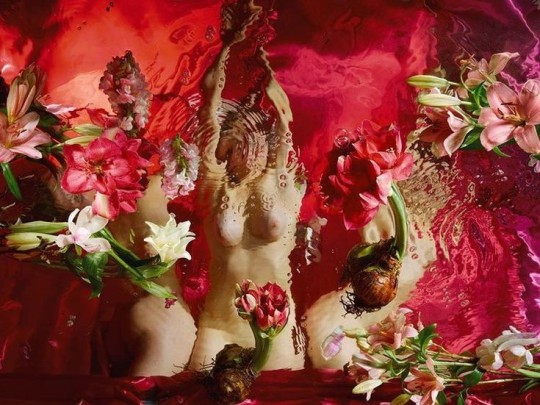
Let's talk about ancient godesses of love and Bharani nakshatra.
I will base my research on the legend of the dead and resurrected god present in many religious myths coming from the middle east (ps : i'm sorry in advance for the grammar, syntax or spelling mistakes that you may find in this post, english is not my first language)
Bharani, situated in the heart of the rashi of aries is governed by Shukr: Venus but also by Yami and Yama in vedic mythology who are twins and gods respectfully of life and death.

Yama, the main deity of Bharani is said to be one of "8 celestial gatekeepers, who guards eight directional doorways or exits through which souls travel from an earthly plane to other planes of existence" making him the lord of Dharma since at one's death, he decides basing on his actions in what plane should one reincarnate.
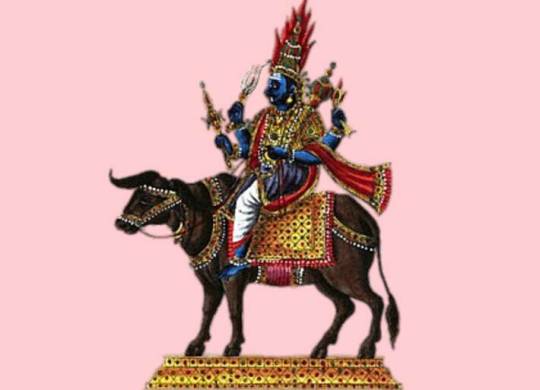
Since Yama is responsible for directing the flow of life on Earth the association between bharani and the yoni becomes evident: the female reproducting system serves as a portal for souls to take on a physical form. So bharani as Claire Nakti perfectly described it relates to the feminine ability to receive, hold, nurture and ultimately transform through the womb.
Because Bharani aligns itself with all the feminine qualities by excellence it makes sense as to why Venus is it's ruler.
Venus is the roman name for the goddess Aphrodite: in greek mythology. She is said to be the goddess of love and beauty at large but also the goddess of war and sexuality. First because the ancient greeks saw the duality that links love to war and how they seem to come together through sex.
Also, Aphrodite is said to be born from the sperm of Ouranos when his testicules got cut by his son Saturn as he was always feconding Gaia, the Earth and causing her distress: he was acting cruel regarding their children. The sperm of Ouranus got mixed up with the foam of the Ocean creating Aphrodite which means "risen from the foam". So it was interesting to see that as Shukr also means sperm in sanskrit and it shows the origin of Venus as a fertility goddess too.

This conception of Aphrodite directly links her to ancient goddesses of love such as Ishtar or Inana in Mesopotamian/summerian mythology or Isis in egyptian mythology. Most of the time, these goddesses are the female counterpart of a god that was once mortal, got cursed, died and then came back to life for them to form an immortal couple.
In the case of Ishtar, her consort is Dumuzi or Tammuz and Osiris is the consort of Isis.
In Mesopotamian mythology :
Ishtar or Inana in sumerian is the goddess of love and sexuality, beauty, fertility as well as war because of her status as a " bloody goddess" mostly refering to her character in plenty of myths.
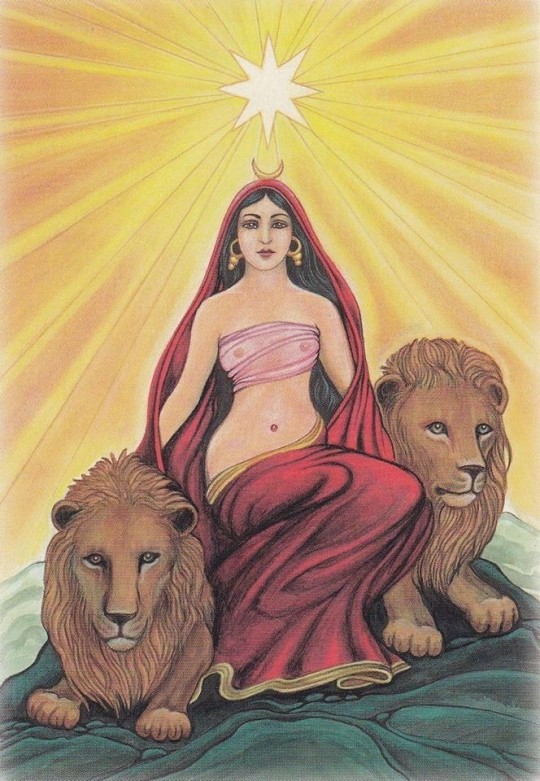
For example: in one story, she became infatuated with the king Gilgamesh, but the latter knowing her fierce reputation, refused her advances. As a result she got furious and unleashed the celestial Bull on Earth which resulted in 7 years of plagues. This celestial bull was later defeated by Gilgamesh and Endiku, and its corpse was throwed in front of Inana. Blinded by rage, she decided that as a punition Enkidu must die and sad at the death of his bestfriend Gilgamesh began his journey to find a cure to Death.
Bharani is a fierce or Ugra nakshatra meaning that its nature is agressive, bold and assertive in pursuing their goals. They are ruthless in the process of accompling what they desire the most and are inclined to extreme mood swings that can result in them to be "blinded" by their extreme emotions perfectly expressing the passionate character of Venus and her other equivalents in differents pantheons of antiquity.
Inana/ Ishtar's story with Dumuzi/Tammur begins as she was convinced to chose him by her brother Utu. Then she got married with the shepphard Dumuzi instead of whom she prefered the farmer: Enkinmdou. During the courtship, Inana prefered the fine textile of the farmer and his beer rather than the thick wool and milk of Dumuzi. The preference for the shepphard illustrates that at the time the Mesopotamian civilisation was known for their proliferent agriculture with the egyptians in the region, so this myth encapsulate the opposition between nomads and sendatary people at this specifific time period.
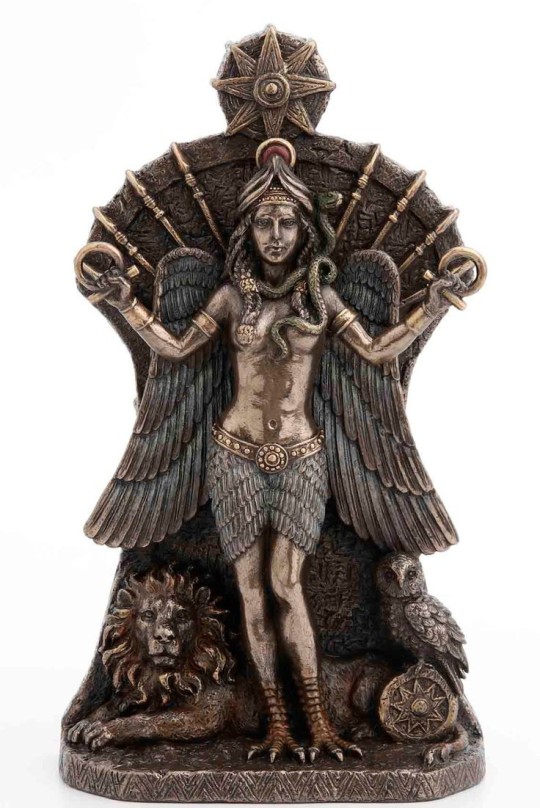
By the way, another symbol of Bharani is the cave and traditionnaly, the cave was used as a storage room for food. Also Bharani's purpose is Artha so these individuals are motivated to accumalate resources and provide safety and security, so Bharani can be linked to the exploitation of natural ressources like the soil illustrating the preference of Ishtar for the farmer. This is reinforced also by its Earth element.
So coming back to the myth, in a mesopotamian text called Inana's Descent to the Underworld, the goddess goes to Kur (hell) with the intent of conquering it, and her sister Ereshkigal who rules the Underworld, kills her. She learns that she can escape if she finds a sacrifice to replace her, in her search, she encounters servants who were mourning her death however she finds Dumuzi relaxing on a throne being entertained by enslaved girls. Enraged by his disloyalty she selects him as a sacrifice and he is dragged to the Underworld by demons.
He is eventually resurrected by Inana and they become an "immortal couple" as he may only come back to life for half of the year, being replaced by his son (?) who is also his reincarnation for the other half of the same years, so describing the cycle of regeneration of life.
Other mythologycal stories of goddesses in the near east describe a similar patterns:
The goddess Asherah is described as being the mother and the lover of her son Adonis.
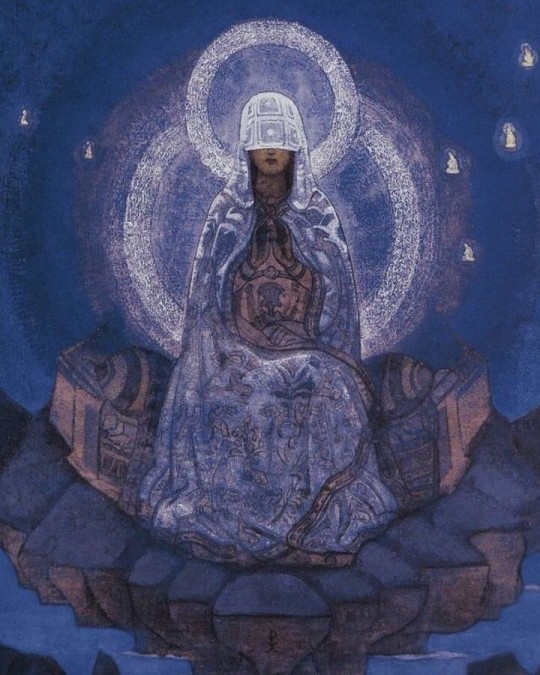
The goddess Cybele in the phrygian pantheon takes the form of an old woman as she described as the mother of everything and of all. And at the same time she is the consort of Attis who his her own son (wtf ?)
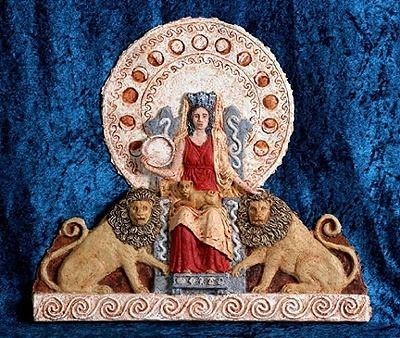
Also, Yama and Yami are implicated in a incestuous entanglement where his sister Yama wanted to lay with him however he refused establishing himself as a god with an infaillible moral campus.
All of these representations illustrate the relation between the masculine and the feminine, life and regenration which are all topics related to Bharani nakshatra. Women by their capacity to give life are seen as the source of life and therefore are eternal as they are able to regenarate themselves through daughters which are identical to them whereas man who is unable to reproduce by himself, is therefore mortal feels the need to associate with her to resurrect through a son who is identical to him. Bharani exiting as the embodiment of the link between "the father and the offspring" which is the feminine vessel.
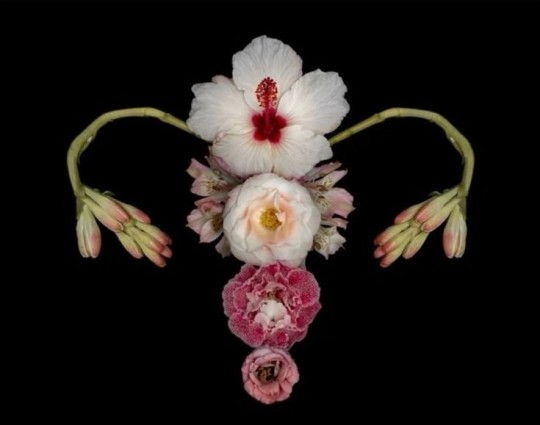

So this is certainly part 1, I think that these ancient myths are where Claire Nakti found her inspiration for her series on Bharani.
#vedic astrology#cinema#coquette#astrology#vintage movies#aesthetic#coquette dollete#fashion#vintage#movies#greek mythology#roman mythology#ancient egypt#bharani#chitra nakshatra#purva bhadrapada#purva phalguni#cowboy carter#venus#adonis
222 notes
·
View notes
Text
The Spectrum of Femininity & Cancer Rashi: A Study
in my previous posts, i had delved into why Punarvasu & Pushya women are often considered the feminine ideal and the various archetypes they present on the screen and in real life (look out for more posts regarding the same!!) and i had mentioned a little bit about the feminine spectrum as seen through nakshatras in the cancer rashi, in this post, im going to explore this further.
Cancer rashi consists of 3 nakshatras:
Punarvasu 20 degree gemini to 3 degree cancer
Pushya 3-16 degree cancer
Ashlesha- 16-29 degree cancer
Tropically Ashlesha is entirely Leo and the nakshatra of Ardra is sidereally entirely Gemini; this means only Punarvasu & Pushya remain in the Cancer rashi in both tropical and vedic systems.
We must understand the feminine journey through these nakshatras as they appear, so we will begin with;
Ardra
This nakshatra is associated with destruction and transformation. This nak's deity is Rudra, the most aggressive form of Lord Shiva. Ardra is associated with purification and renewal through demolition. it is also associated with storms and is symbolized by a teardrop.
The mythology of Ardra nakshatra can be briefly summarised as follows:
Lord Brahma desired his own daughter, and knowing this,the other celestial Gods were enraged and their collective fury gave birth to Rudra.
Rudra's purpose was to prevent this incestuous union, he thus slayed him but the other Gods felt regretful about the whole situation and disowned Rudra.
Rudra is heartbroken at this unjust and unfair treatment; his teardrops come down as thunderous storms.
Given this context, I have often noticed with Ardra women that they tend to be Gamines.
A Gamine is defined as a "young woman who is attractively boyish or possessing a mischievous boyish charm"
These natives tend to be slightly androgynous; there is a conflict between masculine and feminine energies.
The most famous Gamine of all time, Audrey Hepburn had Shatabhisha moon (another Rahu ruled nak).
I have already mentioned that Ingenues in cinema tend to be played by Rohini, Mrigashira, Punarvasu & Pushya natives, who also tend to possess Ingenue essence
However, although they're both youthful, Ingenue & Gamine essence are entirely distinct from each other.
Ingenue is pure yin, whereas Gamine is yang with a yin undercurrent. There is a hint of femininity; one that is not fully developed. It is NOT a mature, womanly, grown up energy but rather an adolescent, in the process of blossoming, kind.
Here are some Gamine (essence) celebs:

Ariana Grande- Ardra sun

Charli XcX- Ardra rising
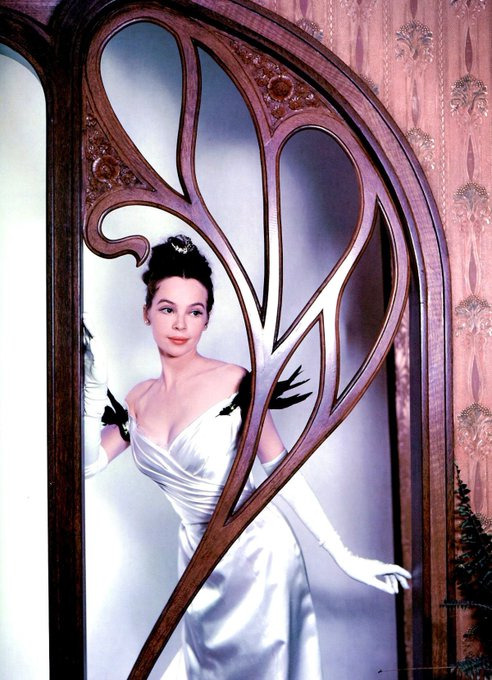
Leslie Caron- Ardra sun conjunct mercury

Lea Seydoux, Ardra sun

Cyndi Lauper, Ardra sun

Aubrey Plaza, Ardra sun

Princess Diana, Ardra sun
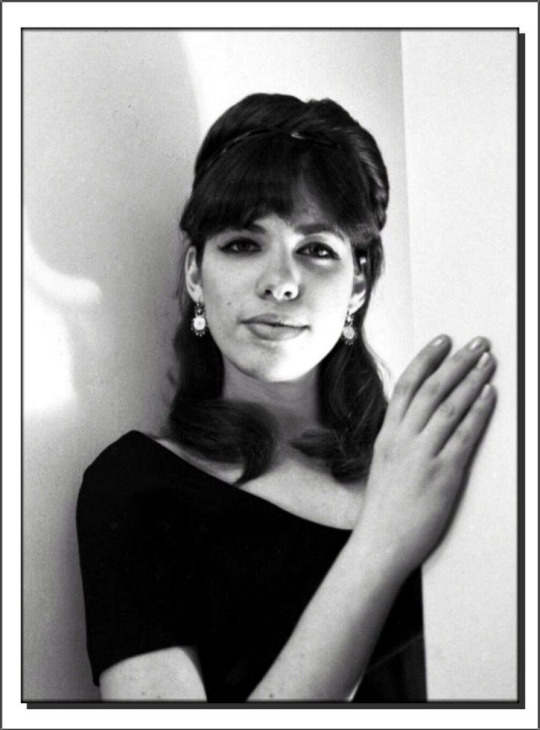
Carly Simon, Ardra sun

Kristin Kreuk who is Ardra moon

Nicole Richie who is Ardra moon

Stella McCartney also Ardra moon
You can see how these women project a delicate, youthful boyish charm.
Rahu is a shadow planet, it does not have any light of its own and thus seeks to absorb light from other sources. This is a very Yin principle and thereby Rahu is the most feminine after Venus. However the feminine energy as we understand it through the nakshatras in Cancer rashi is not just about absorbing energy or holding energy but it is the ability to give and accommodate that Yin space internally. These natives can absorb energy but cannot retain it.
2. Punarvasu
these natives have weathered the storm of Ardra and now seek safety and shelter, hence why a common archetype Punarvasu women seem to play on screen is that of the Ingenue. the youthful, slightly naïve and clueless creature who has to be helped.
the main distinction between an ingenue and a gamine is the fact that the former is naive and innocent whereas the latter is mischievous and teasing. Many Punarvasu women possess an Ingenue essence;

Miranda Kerr, Punarvasu moon

Drew Barrymore, Punarvasu moon

Kristen Bell, Punarvasu sun

Karina, Punarvasu moon
Punarvasu women are known for their bubbly, effervescent personalities. wide-eyed and happy-go-lucky, these natives are usually very chirpy and charming. They're like the main lead in a romcom; very easy to like, deeply perceptive but endearingly clueless at the same time.
from the wide eyed, innocent ingenue, Punarvasu women mature into the Ideal Woman. it is well known that most Punarvasu women marry well, from Kate Middleton (Punarvasu moon) who married Prince William to Miranda Kerr (Punarvasu moon) who is married to the CEO of Snapchat.
another archetype that the Punarvasu woman represents is the Mother. they contain the vast abundance of the cosmos, they are natural givers and their deity is the Mother Goddess Aditi herself. the downside of this is that they can often be enablers; unnecessarily expending their empathy to those who do not deserve it.

Kris Jenner, probably the most famous mom of our times (lol) is a Punarvasu moon. besides Kylie, all her children tend to treat her poorly (Punarvasu being an enabler trope).

Sofia Vergara played one of the most well known fictional moms on TV. She has sun & moon in Punarvasu. even on the show, there are numerous instances where Gloria is taken for granted.
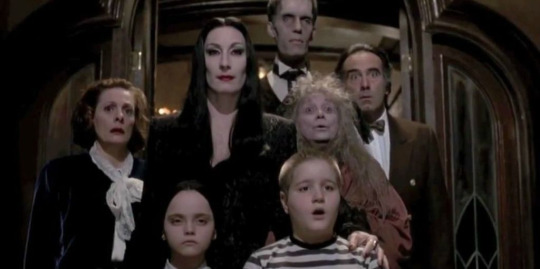
Morticia Addams was both the Trophy Wife/Ideal Woman and the best mom ever (if you've watched the movie, you'll know). She was played by Anjelica Huston who has Punarvasu sun

probably the most famous fictional mom, Maria from the Sound of Music is played by Julie Andrews has Ketu in Punarvasu
3. Pushya
after the abundance of Punarvasu, comes the restriction of Pushya, it concerns itself with holding energy. Punarvasu is ruled by Jupiter which allows for limitless expansion but Pushya is governed by the limitations of Saturn.
these women are highly desirable and much sought after, but its almost like they cant enjoy themselves too much. there are always certain terms that they have to live with. Saturn is structure and discipline, as well as karma and punishment, so it makes sense why these natives seem to live their lives experiencing abundance and lack, almost simultaneously.

in the movie Malena, the protagonist is a widow living alone in a small Italian town. she is desired by everyone; sexualised and even stalked. i had already talked about how Pushya/Punarvasu create women who are highly sought after by men.
the main dilemma in this movie rests on the fact that even though the whole town is obsessed with Malena, she does not benefit from it; she is dehumanized and subject to a lot of cruelty. a pitfall of being so desired is that, while others seem intrigued by Pushya, not everyone understands Pushya natives.
Malena is played by Monica Bellucci who has Pushya moon.

Paris Hilton, Pushya moon was born to riches, however she suffered horrific abuse as a teenager and struggled in her personal life for a very long time. Paris is the quintessential "poor little rich girl". She was subject to sexual and institutional violence but not many people see her in that light at all. Most people view her as a spoilt brat and an airhead.

fun fact, the character London Tipton from the show Suite Life of Zack & Cody was based on Paris Hilton. Tipton is also emotionally neglected by her father and lives alone in her family's hotel. Brenda Song who played London Tipton is a Pushya moon like Paris herself.
here's an excerpt from one of Paris Hilton's interviews:
The irony, she says now, is that she became this icon of licentiousness when she wasn’t even promiscuous. “I was portraying this sex-symbol vibe, but inside I did not feel that way at all. And I did not trust anyone because I had such huge walls that I built around my heart. I didn’t want to let anyone in, and I didn’t want to be hurt, so I didn’t want to ever give myself to someone.”
this to me is very Punarvasu & Pushya coded. these women are sexualised to the nth degree but they're usually sexually conservative and often have very few partners.

Selena Gomez, Pushya stellium (sun, venus & rising)
Selena is one of the wealthiest celebrities in the world and her cosmetics line is one of the most successful celebrity makeup ventures ever, however her personal life has always been troubled, from her chronic illness to her dating history and most recently, there has been disturbing news about how The Idol starring her ex, The Weeknd is heavily inspired by her life and struggles.
Selena is a highly desirable woman, she's been at the top of the game for so long but she's still discredited as a singer and not taken seriously and in recent years, her appearance has been ridiculed and was subject to horrible bodyshaming despite the fact that her struggle with her illness is well known. Pushya is known as a wealth giving nakshatra but it also subjects the native to a lot of struggles.

Celine Dion, Pushya rising
Celine Dion was 12 years old when she met 38 year old Rene Angelil, who would go on to become her manager and husband. It's only logical to assume that he groomed her but Dion's life has had many struggles, she grew up underprivileged and was recently diagnosed with a rare chronic illness.

in the movie Million Dollar Baby, Maggie is a poor waitress who trains and works very hard to become a boxer. however, she is critically injured and cannot fight again, her family proves to be selfish jerks and she meets with a tragic ending. This is a very cautionary Saturnian story of working hard, succeeding, and still meeting difficulties, representing the dark side of Saturn. Maggie is played by Hillary Swank who is Pushya Sun.

Angelina Jolie, Pushya rising
Jolie has had a very difficult life, she battled eating disorders, suicidal tendencies, self-harm, drug addiction and despite being a wealthy, desirable woman, struggles in her personal life (including TW domestic violence)
Jolie is another one of those celebrities who cant seem to catch a break. A highly desirable woman, wanted by everyone, but understood by very few.
Pushya gives the native the ability to hold vast amounts of energy but they're unable to expand it. They seem to face barriers and limitations that prevent them from expanding fully. The feminine energy here is one that has to work hard and discipline themselves. they cultivate grace intentionally. they have to strive to achieve emotional fulfillment. The giving feminine of Punarvasu becomes the restrained feminine in Pushya.
in Punarvasu, we saw the giving nature of the feminine, they seem to have an endless reservoir of compassion, empathy and yin energy. the downside of this is that they're easily taken advantage of, and they're too forgiving of others; their insistence on taking the high road means others who are less deserving get further ahead than them in shorter spans of time. but it is this refinement, and natural elan that makes them the "Ideal Woman". Jupiter's magnificence means that these women possess the kind of vast mental space others can't even conceive of; this creates intrigue as to how they never seem to run out of "energy" (i use this term in its spiritual sense).
in Pushya, we saw the restrained feminine, they work hard and strive to get where they are, however, they seem to operate within a box, they're the beautiful bird within a gilded cage. the reason why this nak is considered the height of femininity is because of the discipline it takes to wield the yin energy consciously and with reservation. Punarvasu seems to give to everyone without discrimination; she's the Celestial Mother but it is very crucial to learn how to discriminate and in Pushya, presided by Saturn, we learn to control and channel our femininity and yin energy in a discriminate manner. not everyone can have them, this makes them all the more appealing.
4. Ashlesha
the very last nak in the Cancer rashi and one which lies entirely in Cancer is Ashlesha. after the giving and holding stages of the feminine, in Ashlesha, we come to confront the dark feminine.
every peak is followed by a valley; in Pushya we reached the height of femininity and now there is a reversal almost, a return to girlhood and unrefined femininity.
there is a descension to darkness and there is a desire to return to the self and to exist for one's self. we've seen how Pushya women often lead difficult lives, now, in Ashlesha, femininity enters its villain era. Its done being treated unfairly and poorly, so in Ashlesha, we see the manifestation of the dark feminine.
Ashlesha is associated with tantra; ascending above the giving traditional feminine and embracing the demonic feminine.

Megan Fox, Ashlesha moon
Jennifer's Body depicts Ashlesha's unique feminine journey quite well. Jennifer is taken advantage of and almost sacrificed but in the process she gains supernatural powers and feasts on boys to maintain it. This trope of being abused, gaining power and using it to get back at people who caused their suffering or represent it is a very common Ashlesha trope.

Charlize Theron, Ashlesha Sun
in the movie Monster (based on a true story), Charlize plays a prostitute who is raped and abused; she in turn becomes a serial killer who kills her clients
This is a very common Ashlesha trope that I will explore more in future posts!!
the earliest a woman was unburdened was in girlhood but if you really think about it, girlhood was a time when you had no agency and no voice; a child is a powerless creature and has to wield their emotions to get by (by throwing tantrums, by being coy etc). children are expected to behave a certain way; they're rewarded for good behaviour and punished for bad. the burden of femininity is absent but with it goes feminine power. thus an Ashlesha native has to resort to other ways to wield their power. this is where the demonic feminine comes to play.
these individuals are self-contained because they have a tendency to think that they could be taken advantage of if they're too trusting. remember how little kids are warned? don't talk to strangers, don't go after the nice man offering candy. children are taught to be afraid and mistrusting, to be alert and cautious, for their own sake/safety.
this nakshatra's deity is Naga (a serpent God of the underworld) and if you think about how snakes are, they are creatures who are entirely limbless, they live on the ground, they rely on their intuition to sense danger, and their only defense is the venom they hold in their body, without which they're utterly helpless. but being highly poisonous, they can destroy any creature in an instant, no matter how big or strong the creature is. they cannot fight the way other animals do, they are not designed that way. this is true of Ashlesha natives as well. they have to be stealthy, secretive, cautious, and manipulative (the word manipulation is often interpreted negatively but even charisma is manipulation, so its all about how its wielded)
Ashlesha is Mercury ruled, mercury is a "eunuch" planet and is genderless. to me it represents the pre-pubescent stage where an individual has not yet attained sexual maturity; in this stage, the native is sexually curious, and wildly imaginative but both afraid and incapable of true intimacy.
Mercury is the smallest planet, therefore these natives do not have the vast emotional reservoir of say Punarvasu or Pushya (which is not to say they're not emotional) thus they're unable to give their energy to others. They're very picky and very deliberate with who they give their energy because they feel drained very easily. But what they lack in the emotional sphere they compensate with intellect. Mercury-ruled nakshatras always give the native raw natural intelligence. these natives are very smart.

Lana Del Rey is Ashlesha Moon. Early on in her career, she was accused of being fake & inauthentic. She sang about sadness and sugar daddies in a way that presented itself as an aesthetic and gave rise to the whole girlblogger/coquette community for whom she is the patron saint. Lana has moved on to other concepts with her albums but her influence over this community continues to stay. Her music heavily features an abusive figure, heavy doses of melancholy, and an unhealthy obsession with money & glamour, even though the subject matter is sad, she sets it up in the most theatrical of ways.
most importantly, she presents herself in her songs as this naïve, lost, perpetually sad, self-loathing creature, presenting the feminine in a way that it seldom is presented. this female gaze is what has made her soooo relatable to so many young girls and women.
in fact the coquette community itself is very Ashlesha coded imo, embracing girliness over womanliness, "gaslight, gatekeep, girlboss", "female manipulator", you name it, there is an undeniable Ashlesha influence at play, including the fact that many of its figureheads have Ashlesha placements.

Vera Farmiga, Ashlesha Sun played Norma in Bates Motel. both her character and the show itself feature many Ashlesha tropes.
Norma is a very possessive, overprotective mother (Cancer women have complicated relationships with their mothers, this manifests in the most toxic way in Ashlesha), here the Ashlesha native plays the Mother and (spoiler alert) her son develops an alternate personality that is an extension of Mother, killing anyone he thinks could pose a threat to their relationship. Norma grew up in an abusive home and faces abuse at the hands of men all her life. The entire show revolves around this dysfunctional Mother-Son relationship with the son embodying his Mother.
Cancer rashi nakshatras are passive by nature and this is taken to new lengths in Ashlesha which is the concluding Cancer nakshatra. these natives cannot seem to do things in a straightforward way, ruled by the smallest planet Mercury which governs the intellect, these natives achieve whatever they want by playing mind games (if unevolved) or by using their intellect (if evolved).
The reason Jupiter is known for always taking the high road is because it has the expansiveness to do so. Mercury gives very little space inwardly so they have to be emotionally conservative and frugal. This is why they seem manipulative to others; they have to use their limited resources to achieve what they want, they cannot "give endlessly".
its interesting how Cancer rashi concludes itself in a Mercury ruled nak since Cancer is Moon ruled and feminine and Mercury is a "eunuch" planet and without gender. The feminine journey had its seeds in the feminine but malefic nakshatra of Ardra; which contributes to the androgyny of these natives (primarily yang but with a hint of yin), developing into the Ingenue (or Maiden) and Mother in Punarvasu, both of whom give endlessly because of naivete and later because of compassion, then learning restraint & discrimination in Pushya (the height of femininity) where natives experience abundance but cannot indulge in it fully ( Saturn teaching discipline). In Ashlesha, we see the dark feminine, rising above everything a woman should "ideally" be. There is nothing "ideal" about Ashlesha, it represents that which is considered taboo, it is an outcast nakshatra and depicts raw, unrefined femininity.
Excluding Rahu ruled Ardra, the Cancer rashi spans nakshatras ruled by Jupiter, Saturn and concludes in Mercury. Both Jupiter & Saturn are masculine planets and Mercury is an eunuch planet. Feminine energy at its most expansive is Punarvasu and at its height, its in Saturn, and its "valley" venturing into its darkness is Mercury which rules the mind. This is a very interesting journey, representative of an experience most women are familiar with; women are expected to be givers, but later, with experience learn how to discriminate with their giving and ultimately decide to put themselves first and be, selectively selfish.
I hope this was interesting<33
#vedic astro notes#vedic astrology#astrology observations#sidereal astrology#astrology notes#astro observations#astro notes#nakshatras#astrology#astroblr#ashlesha#punarvasu#cancer#pushya#ardra
763 notes
·
View notes
Text
Nakshatras 2 = Bharani The Elephant (Aries 13°20' to 26°40')

Bharani represents the " Bearing star " . Its ruled by yama ( the god of death ) that's why they if you reuled by this nakshatra you got punished fast .Venus rules this nakshatra so its represents art , beauty, passion. This nakshatra is also harsh , powerful and hot in nature. Because its comes in the aries sign which ruled by mars . So its also represents the agni rashi ( fire sign ) and its tamo gunas . With mars and venus anergy mixed this nakshatra represents undergo a lot of transformation because two different energies pull can caused confusion. This nakshatra also represents "yoni " means female sexual organ ( because its ruled by both mars and venus ). etymological meaning bharni is " what deserve to be cultivated and preserved " means anything related to living earned . The bharni symbol is Elephant. This nakshatras energies connected basically with we explained to maintain in material world. These people became great counselor snd nurse .

Represents = parents, mole on left side , rich , small chin , healthy, loss of sleep , respected by other .
Birth mark = resemble a fish near navel .

#tarot tumblr#tarotcommunity#vedic astrology#astro notes#vedic astrology observations#astrology#tarot reading#astrology community#astrology observations#kiddo feedback#sidereal astrology#vedic astro observations#vedic astro notes#aswini nakshatra#free tarot reading#tarot cards#tarot deck
68 notes
·
View notes
Text
the astrological implications of "lookalikes" and nakshatra characteristics - the dualistic nature of rahu and shani🪞
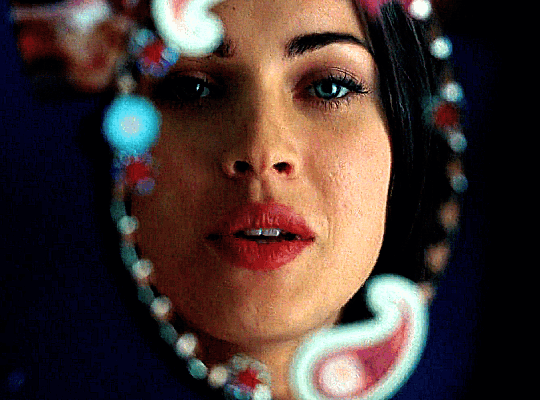
💎 in the seemingly constant conquest for people to find their dominant grahas within their birth chart, it is often helpful for people to compare their morphological features to that of celebrities who share their primary placements. many celebrities often dawn similar faces to their red carpet counterparts which is no coincidence. i have included a few of the ever-increasing physical similarities witnessed among celebrities below and commentaries on what contributes to their facial appearances. this should serve as subtle introduction to a morphology- and fashion-based series i hope to develop within the next year or so. as an additional thank you to the now 5,000 of you, i am also offering 20% off on my cosmetic cosmological readings and vedic reading bundle for the next week. thank you for all of your amazing support and i am beyond excited to witness the growth in people learning about vedic astrology and religion as a whole.

above lies a personal interpretation of mine on the grahas and how they relate to stylistic and morphological essence that i find will be helpful for understanding this post and more posts to come:

🪞 zoë saldana (left) and thandiwe newton (right)
saldana is mrigashira surya (tightly conjunct buddha), pushya lagna (tightly conjunct shukra), and anuradha chandra native. whereas, newton has a swati surya and swati (or vishakha) chandra. the only direct similarity between both women is both were born on monday (the day of the moon) and within their chandra mahadasha which can subtly increase their lunar inclinations.
while both celebrities do not have specific astrological rashis in common, there is a subtle nuance that lies within their astrological compatibility. saldana is extremely dominant in saturnian energies and newton is likely extremely dominant in rahuvian energies. shani and rahu natives are often mistaken for one another due to their similar properties. think of the two grahas as one combined coin of governance over the instances in which define material success in one's life (such as sorrow, pain, grit, and finances). shani acts as the grounded rahu, who is slowed and wise in his pursuit towards fulfillment. whereas, the out-of-body node rahu is exploitative, hasty, and rapid in movement. both govern over the trials and tribulations we may experience in our physicality. thus, both are intricately intertwined and so are their natives.
rahuvian natives share similar features of thinned and highly-arched eyebrows (characteristic of thinner eyebrows being considered more yin in nature), less prominent noses and chins, fuller cheeks, smaller facial frames, expertly defined cupid's bow, and large eyes. whereas, shani natives share similar (if not exact) features to that of rahu but with slightly less exaggerative features erring on the side of angelic essence (yin and ethereal, otherworldly, and mystical) compared to the ingenue essence likes of rahu (decorative, cute yin)

🪞 jaime pressly (left) and margot robbie (right)
another case study of rahuvian-saturnian beauty is pressly (pushya surya loosely conjunct shani and shravana chandra) and robbie (ardra surya tightly conjunct brihaspati, punarvasu lagna tightly conjunct buddha, and swati chandra), both of which share a shani atmakaraka (the graha/karaka most indicative of oneself). both celebrities share the similar characteristics of the two grahas which highly emphasize yin-nature. the subtle essences of both graha types are analyzed below. both of which favor yin and small facial features and clothing details (such as dainty jewelry pieces, note how many of the graha natives sport blue jewelry indicative of shani's rulership) and lighter and softer features (such as bleached/highlighted hair and naturalistic, nude coloring in makeup):
rahu aesthetics: yin, but decorative small-scale yin. features flowing, rounded shapes in both anatomy and clothing-styles. small, compact figure in which natives prefer to adorn themselves with small decorations and details, such as delicate trimmings.
shani aesthetics: most yin essence of the grahas (though it flows back into yang). it is a type of yin that is ethereal in nature. natives' body type has the least concrete shape of all the essences. its silhouettes are long and flowing with draping and webbing. fine textures, as well as transparent and iridescent colours, contribute to their ethereal appearance.

🪞 sarah hyland (left) and mila kunis (right)
hyland has a swati lagna, anuradha surya tightly conjunct shukra, and dhanishta chandra loosely conjunct rahu. kunis has an ashlesha surya, anuradha lagna loosely conjunct ketu and brihaspati, and swati chandra loosely conjunct shani. despite both women being influenced by different planetary aspects (including the oppositionary ketu for kunis), you can notice yet again their saturnian (specifically anuradha) and rahuvian (specifically swati) aspects dominating both women almost entirely.
anuradha: as i spoke about in a previous post on this nakshatra, anuradha natives possess specific, bunny-like features indicative of the nakshatra's rabbit yoni. these natives often possess big, round, and bright eyes; rounded foreheads; full yet smaller horizontal surface area lips; and prominent central incisors.
swati: swati's dominance over mahamaya results in natives' face types having the same length and width dimensions. it is harmonious as a whole without any dominative unique features. they are genetically predisposed to a beautifully attractive round face with harmonic and regular proportions specifically surrounding the contour region of their face. due to the mahamaya emphasis, natives of swati have a distinct affinity for facial feminizing techniques (such as hairline modifications, jaw reduction, rhinoplasty (nose reduction), and facial lifts). note that these improvements might appear the best on these natives due to their rahuvian abundance, but natives must learn to balance this affinity for bodily modification (specifically with their nose or cheekbones) with equal bouts of self care and physical reflection.

🪞 nina dobrev (left) and victoria justice (right)
nina dobrev has an jyeshta lagna, purva ashadha surya loosely conjunct shani, and shravana chandra tightly conjunct buddha. victoria justice has a dhanishta surya, shravana chandra loosely conjunct shani, and swati lagna. both celebrities share similar venusian and saturnian undertones, yet it is likely the shravana emphasis that further adds identical qualities to both women. shravana beauty, contrarily to pushya, it is chandra-based beauty (sensual, deep yin) with saturnian undertones (ethereal yin).
chandra (a graha with emphasis on femininity)-based beauty is mature and sensual when in conjunction with shani (a graha with emphasis on traditionalized values). overall resulting in a romantic-essence beauty type: like the circular shape of a voluptuous, full moon, the romantic shravana silhouette is curvy and round, mirroring that of an hourglass. soft, flowing garments create movement in the silhouette, whereas romantic colors (that of a red and pink palette) look best on these women.
consequently, individuals with the shravana style essence tend to create an overall visual impression of sensuality and glamor. although their essence is yin, such as the ingenue, rahuvian essence, it is a mature sensuality as opposed to the cute, innocent prettiness of rahuvian natives. adjectives such as sexy, 'womanly', and glamorous can be used to describe these natives. abstractly, one can associate the shravana style/anatomical essence with the themes of luxury and indulgence. this aura specifically conjures up images of expensive jewellery, candlelit dinners, and red roses similar to the blooming nature of this nakshatra's artha purushartha and brahma trimurthi.

🪞lili reinhart (left) and brittany murphy (right)
reinhart has an uttara phalguni surya and chandra (loosely conjunct rahu) and swati lagna. whereas, murphy has an ashlesha lagna and swati surya and chandra (loosely conjunct shukra). both women share a surya atmakaraka and brihaspati amatyakaraka. yet again we see a physical example of rahu being indicative of identical similarity amongst others. this is likely due to rahu and shani (if aspecting one's surya or chandra) in one's natal chart being indicative of twins. specifically these aspects include the seventh house and bahuputra yoga. the two grahas' indication of twins can manifest one finding other non-related individuals who share an eerily similar appearance or siblings who are specifically dominant in shani and/or rahu energies looking identical despite not being identical twins. both individuals serving as seperate sides of the same cosmological coin.
also note the stylistic differences between reinhart and murphy above. murphy looks more natural in the shani-based vata colors of silvers and blues. whereas, reinhart looks absolutely gorgeous yet slightly "off" in the neon-red coloring of her dress (due to the countering pitta dosha nature of red). while reinhart may be influenced by the pitta surya via her surya and chandra, it is clear she favors vata coloring naturally. do note that vata dosha colors such as brown and grey should be avoided for those experiencing common vata-associated issues with matters such as anxiety and depression. this is why it is recommended for these natives to incorporate soft, pastel, and pale iterations of the respective colors, such as red or orange. too bright or cold colors can bring natives of this dosha more out of balance. however, white is said to have a good effect on people with a predominant vata dosha constitution. additionally, the accumulated surplus of vata dosha is well influenced by the color yellow (likely contributing to rahu and shani's favoring of blonde hair and highlights).
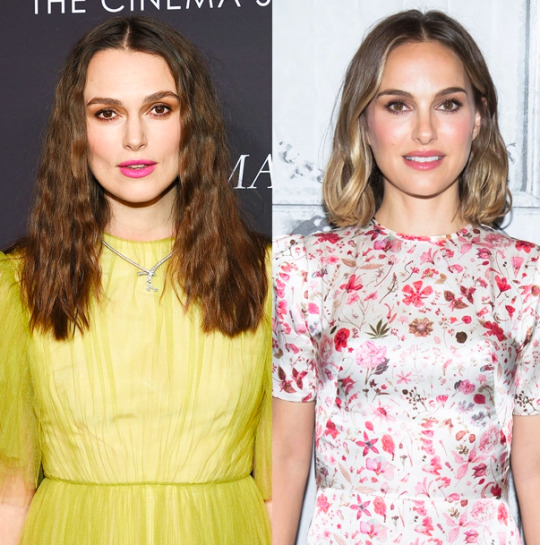
🪞keira knightley (left) and natalie portman (right)
knightley has an uttara bhadrapada surya (loosely conjunct buddha and shukra) and rohini chandra. portman has a rohini surya, swati lagna, and purva phalguni chandra. both were born on tuesday (the day of kuja). both women incorporate lunar romanticism but differ with their shani and rahu influences ever so slightly.
shani subtlety: a combination of of ying features and mysticism, also known as the ethereal and most yin essence. consequently, individuals with the subtlety of shani tend to create an overall visual impression of softness and otherworldliness or mysticism. although they are more feminine like the rahu and lunar essences, this is an 'old soul' kind of femininity as opposed to sensual or cute, pretty femininity. adjectives such as mysterious, ethereal, mystical, or 'old soul' can be used to describe people under this graha's influence. abstractly, one can associate the graha with the themes of mysticism and the cosmos, often conjuring up images of mythical creatures, fairies and mermaids, and the cosmos and galaxies within others.
rahu subtlety: a combination of femininity with childlike innocence and delicacy, also known as the decorative, small-scale yin subtlety. consequently, individuals with rahu subtlety tend to create an overall visual impression of youthful femininity and innocence. although this subtlety is feminine like the lunar essence, it is a childlike, innocent cuteness as opposed to the mature, sensual femininity of the lunar individual. adjectives like gentle, cute, and pretty could be used to describe natives. abstractly, one can associate rahu subtlety with the themes of innocence and youthful idealism, conjuring up images of delicate flowers.
note both natives have a rectangular-shaped face with square foreheads and jawlines. they have long, ovular faces but with angular edges. they both possess immense symmetry and harmony as seen in lunar women but their vata influences dominate this abundance with facial contouring and structural emphasis. their overall appearance is an example of vata extremism with lunar subtleties. compared to more vata-lunar natives like dobrev and justice, one can really see their morphological differences. additionally, these aforementioned planetary subtleties are also witnessed with both of the actresses careers. for example, knightley stars in more whimsical or vintage films such as "pride and prejudice", "the duchess", and "pirates of the caribbean". whereas, portman stars in more romantic, subtle thrillers that embody the purity complex seen within rahu, such as "black swan", "v for vendetta", and "leon".

🪞 zooey deschanel (left): uttara ashadha surya, chandra, and lagna (tightly conjunct buddha) born on thursday, day of brihaspati, with chandra amatyakaraka
🪞katy perry (right): swati surya and lagna (tightly conjunct buddha) and vishakha chandra (tightly conjunct shani) born on thursday, day of brihaspati, with chandra amatyakaraka
🪐 are you saturn and/or rahu dominant? have you encountered similar instances of being compared to other people or celebrities based on your physical appearance? i think it is interesting that even individuals influenced by these grahas are compared to other people more so than those who are not influenced by shani or rahu. it is likely people would suspect buddha to be involved in this phenomena. however, buddha is not implicative of identical nature, it is implicative of the flattery that lies within mimicry via emulation. this is why mercurial celebrities often undergo bodily alterations to resemble rahuvian/saturnian celebrities (such as bella hadid's cosmetic transformation into resembling carla bruni or the character elvira's direct copying of the character vampira).

🪞 jessica chastain (left) and bryce dallas howard (right)
additional examples of astrological lookalikes:
jessica chastain (anuradha lagna, rohini chandra loosely conjunct brihaspati, and uttara bhadrapada surya loosely conjunct buddha) and bryce dallas howard (revati lagna, shatabhisha surya loosely conjunct kuja and shukra, and uttara ashadha chandra). both share chandra atmakarakas.
jordin sparks (swati chandra, mula surya loosely conjunct shani, and purva ashadha lagna) and america ferrera (ashwini surya tightly conjunct buddha, anuradha chandra tightly conjunct kuja, and purva ashadha lagna tightly conjunct brihaspati)
kiernan shipka (vishakha surya and anuradha chandra) and emma watson (ashwini surya, uttara phalguni lagna, and mula chandra)
* all of these placements were found using astrotheme/.com and/or astro-charts/.com. it is important to note that some chandra (moon) placements may be off by up to 6 degrees and lagnas (ascendants/rising signs) as well, due to the fact that many websites do not have 100% accurate birth times for the given celebrities.
xoxo, angel 💋 (will be uploading part two of my buddha self care exploration soon lovelies)
#vedicastrology#astrology#nakshatras#moon#rahu ketu#mercury planet#budha#saturn#chandra#buddha#twins#identical
491 notes
·
View notes
Text
Western Astrology vs. Vedic Astrology

Hi and welcome! Happy Pride Month for everyone who celebrates that, by the way. Also, I want to say something before I get into the topic. You know I thank you on almost every post I make for the support you give me. I got over 100 followers and over 1000 notes after just a week of posting astrology stuff here on Tumblr. This rapid growth of my Tumblr account really tells me that someone actually can resonate with my observations and that I'm doing the right thing. Now let's get into the topic! This post is going to be about the differences between Western astrology and Vedic astrology and there's a lot of them. I've been studying Vedic astrology for a year now and I can say that both types of astrology make sense and are accurate, but they're also too different from each other. I'm gonna explain further on this post which differences are present here.
Disclaimer: This post will be based on my own opinion only. I don't force anyone to think like me or to follow certain type of astrology and to judge another type of astrology. My goal is to share the knowledge I've gained for years and to expand someone's horizons if it's needed. That's what my Tumblr account is actually about.
Western astrology is a heliocentric type of astrology where the Sun is placed at the center of this system and that's why the Sun represents our zodiac sign. The natal chart of Western astrology looks like a circle and it reminds of the heliocentric system as well. Western astrology is also a geocentric, because those type of astrologers use the horizon of the planet Earth and they analyze each planet's move while looking at the sky. There's 12 zodiac signs and 12 months.
The Western astrology mostly depends on the seasons (spring, summer, fall and winter) and the signs whose season starts at the beginning of the season (Aries starts the spring, Cancer starts the summer, Libra starts the fall and Capricorn starts the winter) are considered as cardinal signs and the leaders of the zodiac.
The fixed signs are the ones which continue the season (Taurus continues the spring, Leo continues the summer, Scorpio continues the fall and Aquarius continues the winter). That's why these signs are always described as stubborn and undesirable for changes.
The mutable signs are type of signs whose season start between the end of the one season and at the beginning on another season. (Gemini ends the spring, Virgo ends the summer, Sagittarius ends the fall and Pisces ends the winter). That's why they're mostly perceived as adaptable to the almost every situation they're into.
The signs in Western astrology are also divided into a fire signs (Aries, Leo and Sagittarius) an earth signs (Taurus, Virgo and Capricorn), an air signs (Gemini, Libra and Aquarius) and a water signs (Cancer, Scorpio and Pisces). They're also divided into a masculine (fire and air signs) and a feminine signs (earth and water signs).
Keep in mind that Western and Tropical astrology are synonyms, two different words, but have the same meaning. You can use planets from Sun to Pluto in this type of astrology. Same with the house system, such as Placidus or Whole Sign, you can use any other house system you want in Western astrology.

On the other hand, Vedic astrology is based on the fixed stars, constellations or nakshatras. They are all synonyms. There's overall 27 nakshatras with the 12 signs and each sign has three nakshatras. The Moon and Ascendant (Lagna) are the most important things in someone's Vedic birth chart (Rashi chart or D1 chart) and then the Sun comes after when it comes to the importance of planets. The Moon represents our zodiac sign and our birth nakshatra in Vedic astrology, not the Sun. Each planet rules over the three nakshatras in Vedic astrology. Every nakshatra has its own deity, yoni/animal, symbols and planetary ruler.
The signs go 24 degrees backwards in Vedic astrology, but it depends on which Ayanamsa is used. Vedic astrologers mostly use Lahiri which is the classical and the most used Ayanamsa. You can have Taurus Sun in tropical natal chart, but Aries Sun in sidereal natal chart. Or you can have Taurus Sun in both tropical and sidereal natal chart. It's not always black and white. Mind you that Vedic astrology and Sidereal astrology are synonyms too.
Degrees are so important in Vedic astrology, because the planet with the highest degree in our vedic birth chart is one of the most important planets and it represents our life purpose in general. This planet is called Atmakaraka. The planet at the second most highest degree represents our career and profession and it's called as Amatyakaraka. The planet at the lowest degree represents our partner and future spouse and it's called as Darakaraka. The degrees are important here because of the nakshatras too.
This is how the North Indian style of Vedic birth chart looks like. This is a style of vedic birth chart I use the most, 'cause it's the easiest style for me to analyze someone's natal chart.

This is, on the other hand, the South Indian style of the Vedic birth chart. You can use whichever style of the birth chart you want.
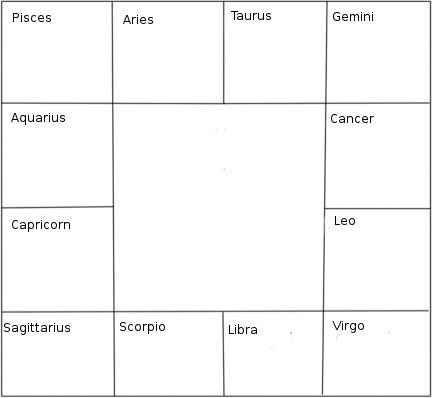
Those are the objective differences of the Western and Vedic astrology. Now I want to get into the subjective differences I personally saw while using both types of astrology.
My personal difference between Western and Vedic astrology is that the Western astrology is generalizing and more obvious, while the Vedic astrology is a little bit deeper and more complex. The Sun represents our external presence and how we behave in outside world, maybe that's why the Western astrology is so obvious and why people from the western society are so egocentric and success-oriented generally. Vedic astrology gets more deeper, because the Moon is the most important planet there and it's associated with our inner world, emotions, mind, home etc. The placements from the Vedic birth chart describe more what we are inside, while the Western natal chart describes what we are outside.
Another difference I see is that the Vedic astrology uses religion and mythology, mostly the Hindu one, while the Western astrology doesn't use religion, especially the modern type of the Western astrology. Like I said previously, each nakshatra has its own deity and mythology, while this doesn't apply to the Western astrology at all.

Okay, that would be it. I hope you enjoyed it and see you very soon. Have all a wonderful day!
Best regards,
Paky McGee
#astro community#astro notes#astro observations#astrology#western astrology#astroblr#astrology tumblr#astrology community#vedic astrology#western chart#nakshatras#jyotish#tropical astrology#sidereal astrology
71 notes
·
View notes
Text



Vaikunta Loka – Hindu Mythology Talon Abraxas
It is the celestial abode of Vishnu.
Vaikuntha is an abode presided over on high exclusively by him, accompanied always by his feminine partner, consort and goddess Lakshmi. According to Ramanuja, Parama padam or Nitya Vibhuti is an eternal heavenly realm and is the divine imperishable world that is the God’s abode. It is the highest state beyond all worlds and nothing else beyond it. It is guarded by the twin deities, Jaya and Vijaya (guardians of Vishnu’s realm).The Vaikuntha planets are full of golden palaces and hanging gardens that grow fragrant sweet scented fruits and flowers
The Vaikuṇṭha planets begin 26,200,000 yojanas (209,600,000 miles) above Satyaloka.In most of the extant Puranas and Vaishnava traditions, Vaikuntha is located in the direction of the Makara Rashi which coincides with the constellation of Capricorn. One version of the cosmology states that Vishnu’s eye is at the South Celestial Pole from where he watches the cosmos.
Now the concept of Vaikuntha is generally associated with Lord Vishnu in Hinduism. It is believed that Vaikuntha is the realm where Lord Vishnu resides. There are detailed descriptions of the wonderful realm called Vaikuntha & the religious Hindus aspire to go there. The Swarga (heaven) on the other hand is a temporary concept in Hinduism & is not recommended as final resting place in our scriptures. In other words, one remains in the cycle of birth & death, even after attaining Swarga, but not when you reach Vaikunta.
Vaikuntha: This divine sky, or sphere, probably makes up 80% of the total Parah-Vyoma, or the total spiritual existence. This section of the spiritual sky is filled with virtually infinite lokas, each loka being governed by an avatar of God. Hayagreev, Dhumavati, Varaaha, Kaal-bhairav, Meenakshi, Matsya, Khandoba, Koorma, Kaali, Mohini, Dattatreya, Kapila, etc. etc. –
One of the most widespread misconception amongst Hindus is that Swarga & Vaikuntha are one and the same. Some people believe that Swarga is the desired realm of after life as per Vedic scriptures. But the Swarga is place within the realm of time & its residents are mortal. The only difference between Swarga & Bhuloka (Earthly realm) is that the duration of life is very long in Swarga.
36 notes
·
View notes
Text
Bharani Nakshatra
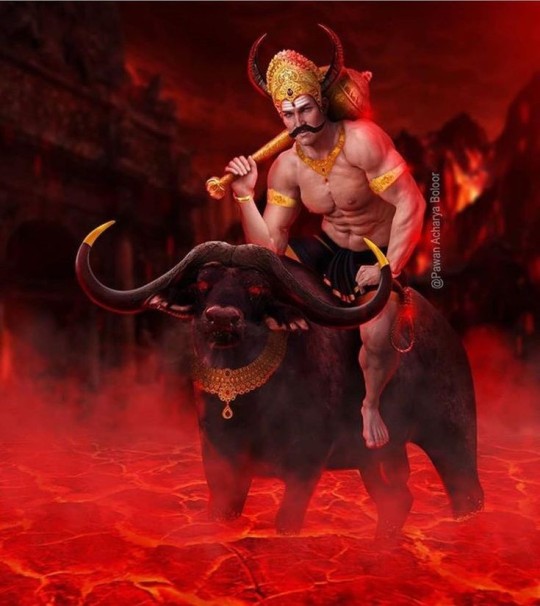
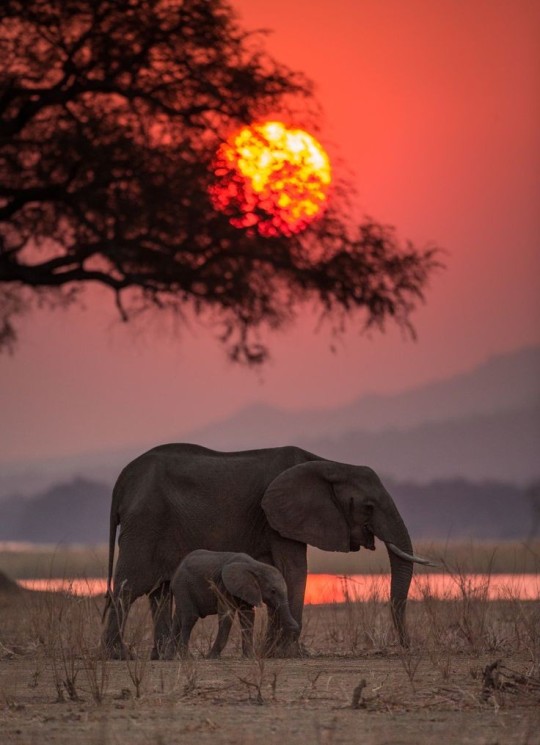
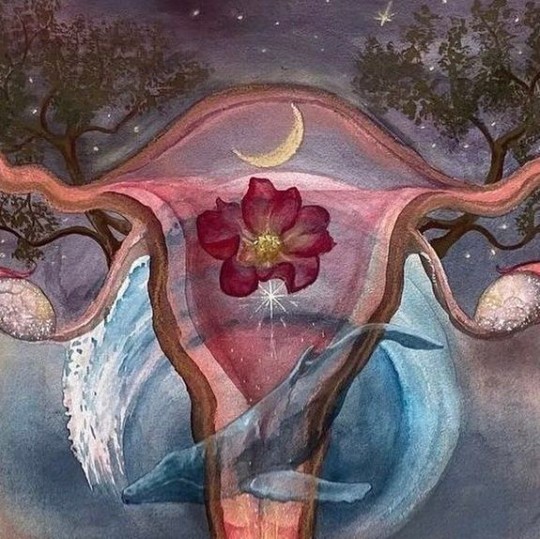
Zodiac Sign: Aries
Astronomical Name: 35 Arietis
Gender: female
Ruling Graha: Venus
Degree Range: 13°20' to 26°40'
Charan Rashi / Navamsha: Leo, Virgo, Libra, Scorpio
Deity: Yama ( God of Death )
Quality: Balanced
Nature: Ugra
Trigun: Rajasic
Symbol: Yoni /Vulva
Meaning: Bearing Children
Purusharth: Artha
Gana: Manushya
Varna: Mleccha
Nadi: Pitta
Yoni: Elephant
Direction: East
Movement: Downward
Resemblence: Maintance (Sthithi)
Body Part: Lower foot
Color: blood red
Element: Prithvi
Animal: Male Elephant
Bird: Crow (kaak)
Tree: Awala or Indian gooseberry
Bharani is the state of the soul where it has received a body and is in the Mother's womb. It is an intense and extremely transformative nakshatra.
It is ruled by Yama(the God of Death). He was cursed by his stepmother Chhayadevi for kicking her pregnant belly that his feet will be infested with maggots. He also was abandoned by his own mother Devi Sangya.Bharani natives have mother wounds.They do not share a good relationship with maternal figures.
Saturn gets debilitated in Bharani nakshatra.(He too has an injured foot which causes him to walk slowly) Saturn is known for having a very close relationship with his mother Chhayadevi.
Bharani natives have a peculiar way of walking.Their steps are often parallel and heavy
They are very aloof and introverted in nature.Wherever Bharani is in the chart,the native does not like to meet people.
They are very upright and moral individuals who have a strong faith in justice.
They also have to deal with a lot of undue accusations and baseless rumors throughout their lives. It's better that they do not pay any heed to those.
They are very wise in nature (as denoted by elephants). Elephants have a matriarchal society of their own and are regarded as one of the most intelligent creatures in the world.They take care of their young till adulthood and the adult children often visit their parents. They also have a funeral ritual of their own(both tying into the Bharani theme)
Association of Bharani with Yama (the God of Death) and womb signifies that Birth and Death are intertwined and one cannot exist without the other.
#hindublr#astrology#vedic astrology#vedic astro notes#vedic#vedic astro observations#birth chart#nakshatra#bharani#venus#aries#sidereal astrology#nakshatras#astrology notes#astrology community#desiblr#astroblr
43 notes
·
View notes
Text
Marriage Indicators in Solar Return
The Rashi of natal Venus falling in 7th house
Venus being the year lord.
The Lagna lord in Ithasala with 7th lord.
Muntha in 7th house or 9th house (Also 11th house)
Natal 7th lord in Ithasala to Venus.
The 1st and 7th lords from birth chart in relation in annual chart.
The 7th Rashi of natal chart being the ascendant in annual chart.
Venus as year lord aspected by Mars
Mars as year lord aspected by Venus.
Vivaha Saham or it’s Lord in 7th house
Sun or Venus or Jupiter in 7th house.
Solar Return 7th house in natal 9th house – legal commitment of marriage
Sun or Jupiter in 9th house
Lagna lord of natal in 7th house of annual chart.
Punya Saham in 7th or 5th house.
Venus in 9th house
Note : Ithashala means applying aspect, sahams are Arabic parts, rashi means sign, muntha means progressed ascendant, lagna means ascendant
For Readings DM
#astrology#astrology observations#zodiac#zodiac signs#astro community#astro observations#vedic astrology#astro notes#vedic astro notes#astrology community#solar return chart#solar return#synastry in astrology
193 notes
·
View notes
Text
Discover The Secrets Of GeminiKnow more about Gemini: Gemini is the 3rd zodiac sign. This sign is dual in nature and because Mercury rules this sign that's why Gemini people are clever in communication.
#Gemini#birth date#rasi#mithun#mithun rashi gochar#mithun career#gemini future jobs#what type of person is gemini
0 notes
Text
SIDEREAL/ VEDIC ASTROLOGY OBSERVATION NO ONE ASK FOR BUT I STILL DO
by veronicawildest
Saturnian rashis even though they are loved by many people, they feel left out. Especially Shravana (misunderstood)
Besides Ketu ruled nakshatras, Mercury rashis (sidereal gemini/virgo) loves yaoi/yuri contents
Ketu ruled nakshatras basically called out for being traditional and all about ancestors (yes they are but not most of the time) when the real deal would be sidereal cancers. The birth nakshatra of Ketu is Ashlesha. (except if you have personal planets on Cancer conjunct on Rahu)
KRS said in one of his satsang videos that most likely to be chef are the nakshatras: Krittika, Pushya, Vishakha and Jyestha.
The angry stereotype of Aries comes from Revati sides of Pisces
I really understand that part that Western Astrology stereotypes other zodiac because it often makes sense too in vedic astrology when you explore nakshatra.
examples: The (Western) Scorpio part where they say stalkers ( Joe Goldberg). Sidereal Libra often tackles with relationships (not just romantic but also friendship and business partners) Especially Vishakha because the yoni of it are tiger. Tigers usually prey on their food/interest.
#astrology notes#astrology observations#vedic astro notes#vedic astro observations#vedic astrology#claire nakti#sidereal astrology#vedic chart
217 notes
·
View notes
Text
This week’s Torah portion, Lech Lecha, begins with God’s stirring call to Avram: “Go forth from your land, from your birthplace, and from your father’s house, to the land that I will show you” (Genesis 12:1). This is more than just a geographical journey; it is the birth of a spiritual odyssey—a call to step into the unknown, to leave behind the familiar, and to set forth towards a destiny that is yet to be revealed. The phrase Lech Lecha can also be understood as “go to yourself.” It is an invitation to discover who we truly are beneath all the layers that life imposes upon us. Avram is called not only to leave his physical surroundings but also to transcend the habits, beliefs, and limitations of his past. The Alter Rebbe, in the Tanya, teaches that this journey is a lifelong one, where we must constantly strive to uncover our truest essence—to move beyond fear and comfort in pursuit of the divine spark within. Rashi tells us that God’s command to Avram was both a test and a promise. Avram was asked to leave behind everything he knew—his land, his family, the very ground beneath his feet. Yet, God promised that this sacrifice would lead to incredible blessings: “I will make you into a great nation, I will bless you, and make your name great.” This reminds us that the most profound growth often comes from stepping beyond the boundaries of what is comfortable. When we are willing to let go and walk into the mystery, we open ourselves up to divine blessings that we could never imagine from the safety of what we know. The sages say that Avram’s response to God’s call was marked by complete emunah, faith. He did not ask where he was going or demand guarantees. He simply trusted and went. This is a powerful lesson for all of us. In our own lives, we are often called to embark on journeys whose destinations are unclear. To take those steps, without knowing the full path, requires us to trust deeply—not just in God but in the promise that our lives hold meaning and purpose, even if we cannot always see the entire picture. A Chassidic teaching beautifully likens Avram’s journey to the journey each soul must undertake in its lifetime. Each of us is called to leave behind our personal “land”—the comfort zones, the places where we have settled spiritually—so that we can step into the fullness of who we are meant to be. To heed the call of Lech Lecha is to recognize that we are not static beings. We are on a sacred journey, ever evolving, always reaching towards the divine, no matter how uncertain the path may seem.
Afshine Emrani
11 notes
·
View notes
Text
I've still been reading Heidi Ann Heiner's Cinderella Tales From Around the World. I've just finished reading all the variants from Ireland, Scotland, and England.
Here are the patterns:
*In Gaelic variants (e.g. two Irish versions and one Scottish), the heroine and her two sisters typically have names that describe their appearance or demeanor, with the sisters' names implying that one is blonde and the other brunette. For example, Fair, Brown, and Trembling, or Fair-Hair, Brown-Hair, and Mangy-Hair, or the Fair Maid, the Swarthy Maid, and the Snow-White Maid.
*As usual, it varies whether the heroine is abused by a stepmother and stepsister(s) or by her own mother (or both parents) and sister(s), or just by her sisters alone, and whether there are two (step)sisters or just one. In the three Gaelic versions with hair-themed naming, the girls are biological sisters, though in The Snow-White Maid, the Fair Maid, the Swarthy Maid, and Bald Pate Their Mother, they're half-sisters and Balt Pate is the Snow-White Maid's stepmother.
*It seems far more common in these versions for the heroine and her (step)sister(s) to be princesses. This has sometimes turned up in other countries' variants so far, most notably in Finette Cendron, but so far the British Isles seem to have the biggest number of Cinderellas who are princesses by birth.
**In the Irish Fair, Brown, and Trembling, not only is Trembling seen by her own prince at church, but the fame of her beauty spreads throughout the world, and all the princes of Ireland come to see her, as do princes from other countries like Spain and Greece. They all want to marry her and agree to duel for her hand after the slipper fits her, but after four days of fighting they all concede to the prince who first fell in love with her.
*The heroine's magical helper is either an old woman or an animal in these variants, and if it's an animal, it's almost always either a black sheep or a red calf. The beginning of one Irish version explains that black ewes were considered good luck.
**In almost all the versions with an animal, as in the Grimms' One-Eye, Two-Eyes, Three-Eyes or French tale of The Blue Bull, the (step)mother sends the heroine out to pasture each day with barely anything to eat, hoping to slowly starve her, but the animal magically provides her with good food.
**As usual, the animal companion tends to be killed by the (step)mother, but unusually, it doesn't stay dead in these variants. Instead, after the heroine gathers up the bones, the animal comes back to life, limping because the heroine lost one shank bone, but otherwise none the worse for wear. There are also some variants where the animal doesn't die at all. In one Scottish version, the heroine is ordered to behead the calf herself, but instead she kills her sister (!), takes the calf and runs away.
*In both Irish and Scottish versions, the special event the heroine attends is always church, not a festival or party. Several versions take place at Christmas and have her attend the special Yuletide Masses.
*The old woman or animal typically not only provides the girl with finery and a horse to ride, but cooks the family's dinner for her by the time she gets back. In one Scottish version, Ashpitel, the black lamb doesn't even give her finery – she just dresses herself in her own fine clothes that she rarely gets to wear, while the magic the lamb provides is just to cook the dinner for her.
*In the Gaelic versions, the prince rides after the heroine the third time she rides away from church, and grabs her by the foot, but only succeeds in pulling off her shoe. Whereas in the Scots versions, she just loses her shoe by accident.
*In Scotland, the story (and the heroine) is most often called Rashin Coatie (a.k.a. Rashie Coat, or Rushen Coatie), because the heroine wears a coat made of rushes, or "rashes" in Scots dialect.
** It varies whether Rashin Coatie is simply forced to serve her (step)mother and (step)sister(s) at home, or whether she runs away, to escape either from a cruel family or from an arranged marriage, and becomes a servant at the prince's castle, a la Donkeyskin.
*Both Irish and Scottish versions tend to include the motif of foot-cutting to make the slipper fit, just like the German versions do. A bird alerts the prince, typically in a rhyme which says that "nipped foot and clipped foot" is riding with him while "pretty foot and bonny foot" is elsewhere. But it's not always the (step)sisters who do it. In the Donkeyskin-like versions of Rashin Coatie, where the heroine runs away and becomes a servant at the prince's castle, the rival who tries to trick the prince is a henwife's daughter instead.
**Henwives are ubiquitous in these variants. But in the Gaelic versions (both Irish and Scottish), the henwife is benevolent, often serving as the heroine's magical helper, while in the Scots-dialect Rashin Coatie variants, she's a secondary villain, with the above-mentioned daughter who aspires to marry the prince.
*The Gaelic versions usually continue the story after the heroine's marriage, and have her eldest sister (the blonde one) throw her into the sea or a lake, then take her place. But either the princess's bed stays afloat so she doesn't drown, or she's captured by a whale or a water monster that keeps her a prisoner in the deep, yet briefly lets her onto the shore now and then. A cowherd sees her and alerts her royal husband, who rescues her, slaying the whale or monster if there is one, and the sister is executed.
*There doesn't seem to be a strong tradition of localized, oral Cinderella stories in England the way there is in Ireland and Scotland. But this book does include an English literary version: The Cinder-Maid by Joseph Jacobs, the folklorist who gave us the best-known versions of Jack and the Beanstalk and The Three Little Pigs.
**As usual in Jacobs' retellings of folktales, he borrows motifs from various different oral versions in an attempt to write down the "definitive" version of the tale. So The Cinder-Maid is basically the Grimms' Aschenputtel, with the three-day royal festival, the heroine getting her finery from a hazel tree on her mother's grave, the prince smearing the palace steps with tar to catch her golden slipper, and the stepsisters cutting off parts of their feet. But Jacobs also includes the motifs of "finery from a nutshell" and "hollow tree opens to reveal gifts" from other versions – each dress and pair of shoes comes from inside a hazelnut from the tree, and then the trunk opens to produce a coach and horses. And the bird in the tree instructs Cinder-Maid to leave by midnight, as in Perrault. (The midnight deadline is a rare motif in international Cindrellas, despite the fame Perrault gave it; in most versions she just leaves early to ensure that she gets home before her family does.)
**In his footnotes to The Cinder-Maid, Jacobs notes the existence of Rhodopis, but he argues that the entire Cinderella story (the persecuted heroine, magical help to attend an event, etc.) most likely originated in Germany, because it was a German betrothal tradition for a man to put a shoe on his fiancée's foot. He makes no mention of Ye Xian, or the more common belief that the story was born in China from the Chinese view of tiny feet as the height of feminine beauty. This reminds me of a hypothesis I once read that maybe Ye Xian isn't really as ancient a tale as it's believed to be – that maybe the story originated in Germany, then spread to China by way of the Silk Road, and that the name "Ye Xian" may derive from the similar-sounding "aschen," the German word for "ashes" that starts every German form of Cinderella's name (Aschenputtel, Aschenbrödel, etc.). Personally, though, I don't see why the reverse can't be true: couldn't the story just as easily have travelled from China to Germany? Maybe the heroine's association with ashes started when Germans heard the name "Ye Xian" and thought it sounded similar to "aschen"!
But I'm getting ahead of myself talking about China. The next several Cinderellas I'll be reading come from Scandinavia.
@adarkrainbow, @ariel-seagull-wings, @themousefromfantasyland
#cinderella#fairy tale#variations#cinderella tales from around the world#heidi ann heiner#ireland#scotland#england#tw: violence
37 notes
·
View notes
Text
Decoding Venus: A Journey Through the Nakshatras
Cancer rashi is considered the most feminine yet all the naks in Cancer rashi are ruled by masculine planets except Ashlesha ruled by Mercury which is a "eunuch" planet.
Similarly, Venus is the most feminine planet but Venusian nakshatras embody true masculinity.
Sexual polarity is imp because men are drawn to women who may outwardly seem feminine and charming but who embody strength and are emotionally masculine. The same way, women are drawn to men who seem outwardly masculine but who are in tune with femininity inwardly; this is what manifests as gentleness, kindness, appreciation for the fine things etc
The opposite of Cancer/4h is Capricorn/10h, 3 nakshatras fall into Capricorn rashi, Uttarshada, Shravana & Dhanishta. But I'll explain their masculinity later.
Now here are some things to consider,
*all Venusian naks are Ugra nakshatras (known for being fierce and cruel)
*all Venusian naks are Manushya gana
*all Venusian naks belong to a fire sign rashi
*all Venusian naks are assigned the cosmic purpose of 'preservation' (in Hinduism, the 3 cosmic functions, creation/preservation/destruction are personified as the Trimurti and different naks are assigned different functions)
The first Venus nak is Bharani and it is the second nak overall. It is important to understand that the Venusian journey begins in Bharani.
Bharani's deity is Lord Yama, the God of Death. He delivers justice and embodies Kala or time. Bharani is symbolised by the Yoni (which means "vulva" in sanskrit) and the word Bharani itself means "to bear".
Birth and death may seem like polar opposites but there is an element of each in the other. To be born is to experience the death of passivity. To die is to experience the birth of the spirit in another form. Lord Yama is associated with divine punishment and dharma but it would be more accurate to say that Lord Yama metes out the treatment that is the result of our own actions. He rules over time, hence what we do in the present is what we will taste in the future as its consequences.
"Time takes the ugliness and horror out of death and turns it into beauty"- Dodie Smith (Bharani Sun)
In French, orgasm is referred to as "La petite mort" which translates to "little death" and it connotes the "brief loss or weakening of the consciousness". Sex and death have had close associations in many cultures.
Hanya Yanagihara's novel 'A Little Life' has the following book cover:

its a photograph by Peter Hujar and is called 'Orgasmic Man'. The author insisted on using this image for the novel's cover because of how its difficult to tell whether the man is in pain or pleasure. This ambiguity is a major theme in the book as well, that deals heavily with sex, trauma, abuse, addiction etc
Hanya Yanagihara has Bharani Moon with Purvaphalguni Mercury & Saturn
The book, you could say explores the dark side of Venus in some capacity. one reviewer described it as "There may never have been a cover that better captures the emotional heart of a story — that is to say the agony and the ecstasy of desire."
"It poses this question: How does one navigate desire when all pleasure to be discovered in the sexual act has been forever stripped away and turned into the stuff of nightmares, and yet the deep longing for love remains?" the conflict between lust and love is a theme that's explored in the works of many Venusian natives.
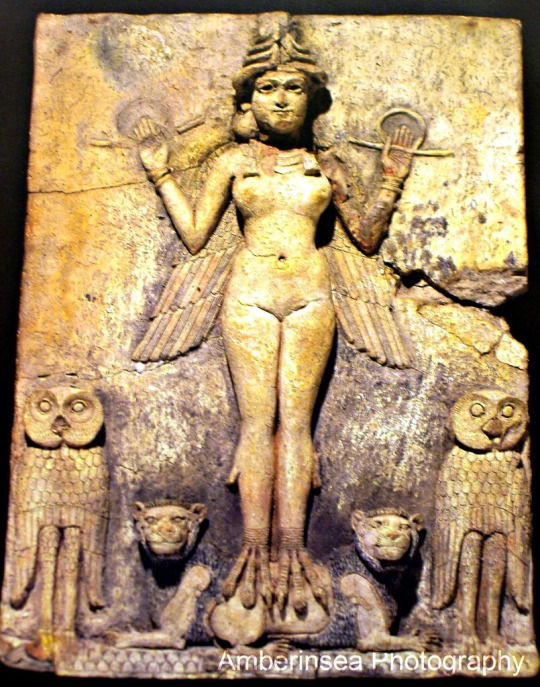
Ishtar is a Mesopotamian Goddess of love, fertility and war. Like many ancient deities, she was a dualistic deity, associated with life and death, making love and war as well as thunderstorms and food preservation. Ishtar was closely associated with Venus.
Ishtar, though responsible for all life is never considered a Mother goddess. She bore arms as the Goddess of War. She is a paradoxical Goddess figure with many contradictions; sex and violence, fecundity and death, beauty and terror, centrality and marginality, order and chaos. She occupies a liminal space and her influence spans every area of society, she governs all of civilization (think: the preservation aspect of all Venus nakshatras). She was even worshipped as the Goddess of transition between life and death due to her ability to come back from the underworld after she died.
She was widely worshipped in Mesopotamian society as an administrator of justice (see the parallels between Lord Yama and Goddess Ishtar?)
All of this gives us an idea about the highly complex nature of Venus. it amuses me when people think that Venus is some soft uwu nakshatra with bright colored aesthetics and cute lighting when the actual Venusian themes are of violence and war💀💀💀Venusian naks are hardcore af, let me just say that.
“Love is a smoke made with the fume of sighs; Being purg'd, a fire sparkling in lovers' eyes; Being vex'd, a sea nourish'd with lovers' tears; What is it else? A madness most discreet, A choking gall, and a preserving sweet.” ― William Shakespeare (Bharani Sun)
Bharani is closely associated with birth and procreation, however its cosmic function is "preservation" and not creation. This is because with other naks assigned the cosmic function of creation (ex: Ashwini & Punarvasu) creation must manifest from nothing. It manifests itself on its own; you are the creator and the creation. It is a spiritual and metaphysical concept, so to speak.
But Bharani is not associated with that sort of cosmic creation where the universe manifests itself from nothing, instead its connected to the most primitive and primal of human acts; copulation and procreation. Its directly associated with sex and reproduction. And this is not something that can happen on its own. by nature, procreation necessitates the union of man and woman. its not a symbolic act or a metaphor, it requires two people to get down and dirty. Creation of this sort is necessary to "maintain" or "preserve" our species; it does not arise out of nothing; certain prerequisite conditions have to be met in order for it to take place. this is why Bharani's purpose is "preservation".
from the minute that one is born, we are all on a journey towards death. Lord Yama embodies time because the actions we perform in the present can only be revealed in their true nature with time, i.e, whatever we sow, we reap but this is something that takes time. everything in life can be said to come down to timing. be it lessons learnt or success achieved.
its important to keep in mind that Bharani's aim is Artha
There are 4 aims, namely and each nakshatra has a specific aim assigned to it.
Dharma: doing what you are supposed to do. Fulfilling your soul in daily activities Artha: generating income and wealth so you can provide shelter and food for your body. Kama: going after your desires. Moksha: liberating your soul.
Venus itself is a planet associated with wealth, luxury, abundance, beauty etc
The first Venusian nakshatra is associated with the material aspect of Venus which is creating income and thereby attaining security. If we look at Maslow's hierarchy of needs and correspond it to the 4 aims, we can say that Artha is at the foundational base and Moksha is at the very top with Kama & Dharma located in between the two.
It is very telling that while Venusian nakshatras are split among Artha, Kama & Moksha aims, there is no nakshatra assigned the aim of Dharma, which is doing one's duty. With Venus there is no duty, no obligation, no decree; whatever one does we do out of love, this is the essence of Venus energy.
Therefore Bharani concerns itself with the most basic of needs, which is creating security for itself. It occupies the sign of Aries, ruled by Mars and we can say Mars represents the 'soldier'; it is raw, primitive and only concerned with survival.
As we progress through the other Venus nakshatras, we see how the aims ascend on the hierarchy, finally reaching its peak with "Moksha" or liberation in the final Venusian nakshatra.
Bharani is concerned with the most raw, primal and primitive of acts and located in the very first fire sign of Aries, it is an outcaste nakshatra and is the ONLY venusian nakshatra that is outcaste which is in itself unusual because Venus is concerned with refinement, grace, elan and elegance but the fact that the Venusian journey begins in a nakshatra that is outcaste with the aim of Artha implies one deep cosmic truth; in order for an individual to truly embody Venus and understand the planet's energies, you must first begin at the very bottom and ascend to the top. in Bharani, represented by the womb, we see the aspect of a human being taking physical form and being born, they are not born to riches or pleasures but in the most dire of circumstances, and they must now create security for themselves before they can even think of pursuing pleasures of any kind.
All Venusian nakshatras perform the cosmic function of "preservation" or "maintenance".
this is because they are all Manushya gana nakshatras, and human nature is one that's primarily best suited for this cosmic function over the functions of Creation or Dissolution (for deva gana and rakshasa gana naks).
Creation itself is the feminine principle but "preservation" is inherently masculine. Destruction or dissolution is a different expression of the same feminine principle.
All Venusian nakshatras are also of Pitta (fire) nadi
In Ayurveda, people with pitta are said to usually have a muscular build, be very athletic, and serve as strong leaders. They're highly motivated, goal-oriented, and competitive. They are said to possess an aggressive and tenacious nature.
The second Venusian nakshatra is Purvaphalguni, presided by the deity Bhaga, God of Marital Bliss. Purvaphalguni is symbolised by the front legs of the bed or a swinging hammock, indicating relaxation and comfort.
while Bharani was concerned with birth and death, in Purvaphalguni the association is with the sexual act itself.
Purvaphalguni's aim is Kama (desire) and this nakshatra is associated with love, romance, wealth, luxury etc.
Bharani's yoni animal was the elephant, a large yoni animal signifies the immense sexual appetite of the native but also the capacity for a certain breadth of experiences👀 with Purvaphalguni, the yoni animal is a rat, which is widely considered to be the most sexual animal as it copulates and reproduces at an immense pace. It makes sense as to why Purvaphalguni is about sexual pleasures and bliss and not about the how or the why; its purely concerned with the process. These natives are freaky af and the most openly and unabashedly sexual of all.
“Beauty is desired in order that it may be befouled; not for its own sake, but for the joy brought by the certainty of profaning it.” ― Georges Bataille (Purvaphalguni Sun)
Purvaphalguni men love the idea of corrupting something that is innocent and pure and making it filthy.many of them perhaps have a virginity kink 👀💀
In addition to this, Purvaphalguni men and Venusian men in general tend to exhibit the "Madonna-Whore Complex"

Jesse James (Purvaphalguni Sun, Bharani Mars) was married to Sandra Bullock and was outed as a serial cheater.

Tiger Woods (Purvashada Sun, Ketu in Bharani) was exposed as a chronic cheater (he slept with over 120 women during the course of his marriage) and spent time in rehab for his sex addiction.
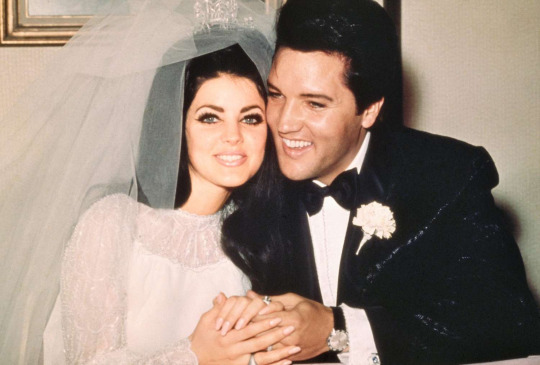
Elvis Presley (Purvashada Sun) met his wife Priscilla Presley when she was 14 and he was 24. He was hell-bent on "preserving her purity" and they had a very "chaste relationship" after she was married and had a baby however he did not want to have sex with her anymore because she was a mother.

In the 2002 movie Spider, Ralph Fiennes played a man who struggled with the Madonna-Whore complex. He has Mercury in Purvashada as his amatyakaraka.
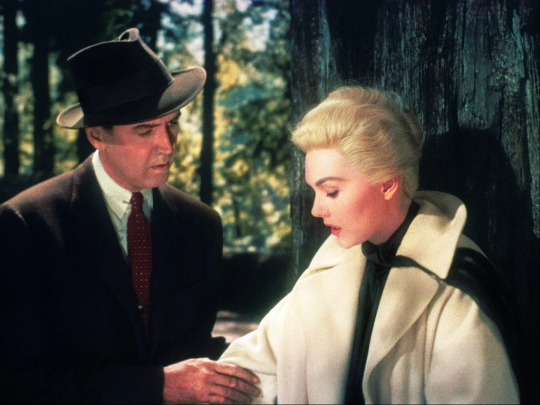
the movie Vertigo (1958) has this complex forming a major plotline. it stars James Stewart (Ketu in Purvashada) and Kim Novak (Mars in Purvaphalguni atmakaraka and Ketu in Purvaphalguni) as the lead actors.
The novel Portrait of the Artist As a Young Man features a protagonist who suffers from this complex and its the primary plot of the novel as well. Its written by James Joyce who is Purvashada Rising.
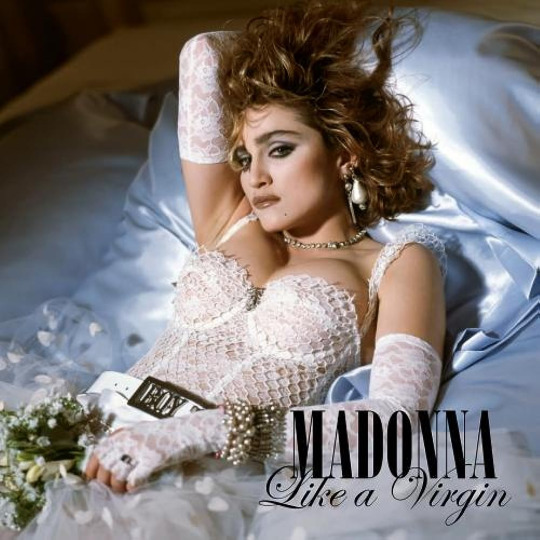
Madonna (Purvaphalguni Moon) often toyed around with the Madonna-Whore complex early on in her career and even has a song called Like A Virgin, the lyrics go like this:
"Like a virgin Touched for the very first time Like a virgin When your heart beats next to mine
Gonna give you all my love, boy My fear is fading fast Been saving it all for you 'cause only love can last You're so fine and you're mine Make me strong, yeah you make me bold, oh, your love thawed out Yeah, your love thawed out what was scared and cold."
Since Purvaphalguni is symbolised by the marital bed, and the consummation of the marriage was always associated with "losing innocence and virginity" and how sexual experience is linked with "knowing" and maturing from child to adult.

Black Swan, starring Natalie Portman (Purvaphalguni Moon) and Mila Kunis (Purvaphalguni Mercury & Venus) is a sexually charged movie that explores this dichotomy very well. Nina is a good little girl whereas Lily is highly sexual and wild.
A major theme of this movie is merging these two opposing forces. For good girl Nina to embrace her dark, wild "Black Swan" side. (spoiler alert!!) obviously in this movie, Lily's character is said to be an extension of Nina and not a real person which drives home this point even further.
Losing innocence and corruption/being corrupted are major themes in Purvaphalguni nakshatra and this is not just sexual. An ordinary person losing all sense of morality and submitting to utter debauchery and depravation is a common trope found in the works of many Purvaphalguni natives.

Take the movie, Taxi Driver, for example, it was written by Paul Schrader who has Bharani Moon, Purvaphalguni Venus & Mars
This movie revolves around Travis (the titular Taxi Driver) who is experiencing an extreme existential crisis and is deeply troubled by the prostitution he witnesses around the city; he is unsettled by the moral bankruptness and urban decay around him. He sets out to rescue a child prostitute and the movie has major elements of sex and violence.
This movie is a good example of Bharani's restrained Venusian expression meeting with Purvaphalguni's excess.

Hardcore (1979) directed by Paul Schrader (honestly all of the movies he's written and directed are LOADED with Venusian tropes, themes and motifs) is about a father who goes looking for his daughter who went on a church trip to Cali and ended up working as a porn star.
Like I've mentioned before, the dichotomy between innocence and corruption, divine and human, Madonna and Whore are core themes in the works of these natives. Like Taxi Driver, the protagonist has to descend into hell in order to save the person who is lost. The contrast between "polite society" or the prim & proper "morally upright" side of society versus the depraved, sleazy, immoral underworld is depicted in a very stark and raw manner.
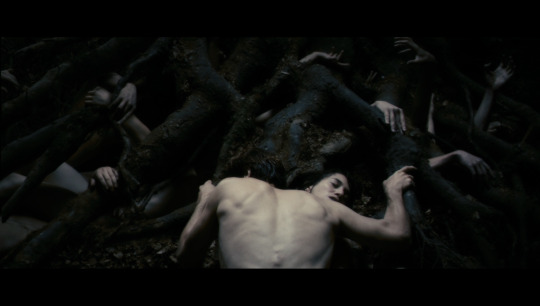
Antichrist (2009) directed by Lars Von Trier (Bharani Sun, Purvashada Moon) and starring Willem Dafoe (Purvaphalguni Moon, Purvashada Rising) is another movie that explores Venus at its most chaotic, unrefined and truthful. Its about a grieving couple who lost their son and go to a cabin in the woods to cope but of course, crazy shit starts happening and is rife with sadomasochistic elements.
Purvaphalguni is the height of Venus, located in the sign of Leo which is ruled by the Sun; here a native loses all sense of ego or pride and gives in completely to their pleasures and desires. Its a very hedonistic nakshatra. Given that its aim is Kama and is a Manushya gana nakshatra, it points to how a native is willing to do anything to attain what he desires; there is no sense of "right" or "wrong" here because Venus is a planet of indulgence.
In Bharani, presided by Lord Yama, the themes were strongly tied to karma, justice, time etc but this is the initiatory stage of Venus, where Venus acts with restraint. In Purvaphalguni, Venus is at its most expansive and wild. Bharani's yoni animal is an elephant; are elephants known for being very sexual? no. they are known for how they protect their herd and how nurturing they are of their young ones. Compare this to the rat (Purvphalguni's yoni animal). Rats have millions of kids and don't stick around to care for them particularly. Since they procreate at such a fast pace, it's every rat for himself. they are associated with filth and dirt.
Its very common for Purvaphalguni men to be involved in sadomasochistic sexual activities; in fact, two of the most famous writers to address these themes, Georges Bataille and Marquis de Sade both have Purvaphalguni Sun & Moon respectively.
“Life has always taken place in a tumult without apparent cohesion, but it only finds its grandeur and its reality in ecstasy and in ecstatic love.”― Georges Bataille (Purvaphalguni Sun)
"Lust is to the other passions what the nervous fluid is to life; it supports them all, lends strength to them all ambition, cruelty, avarice, revenge, are all founded on lust.”― Marquis de Sade(Purvaphalguni Moon with Ketu in Purvashada)
As such, many Purvaphalguni men have been involved in some type of sex scandal at least once in their career.
Nabokov who wrote Lolita had Purvaphalguni Moon and its a book about a old man who falls in love with a child. Like I said previously Purvaphalguni/Venusian men in general tend to have a virgin kink/a thing for innocence and corrupting someone and derive a sense of satisfaction from it.

in the 90s, Hugh Grant (Purvaphalguni Sun) was caught with a prostitute while he was in a long term relationship with Liz Hurley.

Freddie Mercury (Purvaphalguni Sun & Rising) was known for his wild and freaky love life, he openly spoke about his "enormous sex drive", he once celebrated his birthday with a 5 day orgy💀💀

Namjoon (Purvaphalguni Sun) received flak for recommending the book Almost Transparent Blue which featured graphic sexuality and violence including threesomes and rough sex. In his early career, he also received flak for his sexually suggestive songs like "Expensive Girl", "Trouble" and "Joke".
I don't want to go into this because I don't think there can be astrological evidence of someone being an abuser (i.e anyone could be any abuser regardless of their placements) but many Purvaphalguni men have had sexual harassment charges pressed against them.
“One must do violence to the object of one's desire; when it surrenders, the pleasure is greater.”― Marquis De Sade (Purvaphalguni Moon with Ketu in Purvashada)
This nak is the height of Venusian indulgence and as every peak is followed by a valley, Venus after ascending through the aims of Artha and Kama, now finds itself in the concluding Venus nakshatra of Purvashada. The aim of this nak is Moksha. When all else is satisfied, the only thing left to do is seek salvation.
Purvashada's yoni animal is a monkey and Purvashada belongs to the Brahmin caste. It is a Manushya gana nakshatra.
It is symbolised by “a fan/winnowing machine which separates grains from the husk”. It occupies the sign of Sagittarius and thus its sign lord is Jupiter.
The deity of Purvashada is 'Apah', Goddess of Water/Ocean.
In the final Venus nakshatra, the themes of refinement and purification are at their height. There is a relentless desire for expansion and the combined energies of Jupiter & Venus together can make a native simultaneously expansive but still constricted at the same time. Purification is a major theme in this nak. Bharani was concerned with birth and creation, Purvaphalguni with the sexual act in itself but in Purvashada, the Venusian focus shifts beyond either of the two.
Although Magha is most commonly associated with the "Goth" aesthetic, I would say even Purvashada natives have a tendency to lean towards a darker, macabre aesthetic.

Ozzy Osbourne (Purvashada Moon) was lead vocalist of the heavy metal band Black Sabbath and called himself "Prince of Darkness".

Johnny Depp (Purvashada Moon) stars as Edward Scissorhands in the movie of the same name. The movie revolves around an artificial humanoid creature who tries and fails to adjust to normal society despite the efforts of those around him. He falls in love with a woman he cannot be with. This is a common trope in the works of many Purvashada natives.
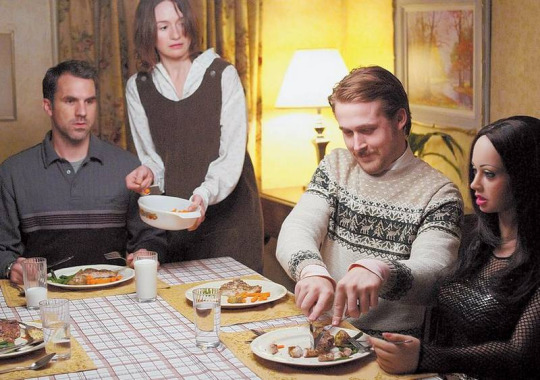
Lars & the Real Girl (2007) stars Ryan Gosling (Purvashada Moon) as a socially awkward man who begins to have a relationship with a lifelike doll believing her to be real. His family tries really hard to help him and ultimately (in a very Purvashada esque ending; because of Purvashada's connection to water) he believes that the doll is dying and mourns for her while submerged in water.

Charles Addams who created The Addams Family had Purvashada Sun (he was also Magha Moon), Morticia Addams was played by Carolyn Jones who was Bharani Sun & Moon, in the 90s adaptations she was played by Anjelica Huston who had Purvaphalguni Moon & Ketu

in the movie City of Angels starring Nicholas Cage (Purvashada Sun) the theme of a human and non-human being uniting is once again repeated, this time, Cage plays an angel who falls in love with a mortal woman. (spoiler alert!!) the movie ends with Cage choosing to be a mortal but his human lover passing away tragically. In true blue Purvashada fashion, the movie ends with Cage near the ocean, accepting his grief and new life as a mortal being.

in Francois Truffaut (Purvashada Rising) Jules et Jim, we see the tale of two men who both love the same woman, Catherine. The story repeats the same trope of how neither man gets to truly be with her (true union being impossible is a common Purvashada trope) and the movie ends with her driving Jim and herself into a river while Jules watches on. (death in the water or mourning someone in the water etc seems to be a common motif in the works of these natives)
“Love (understood as the desire of good for another) is in fact so unnatural a phenomenon that it can scarcely repeat itself; the soul being unable to become virgin again and not having energy enough to cast itself out again into the ocean of another soul.”― James Joyce (Purvashada Rising)
“The best people possess a feeling for beauty, the courage to take risks, the discipline to tell the truth, the capacity for sacrifice. Ironically, their virtues make them vulnerable; they are often wounded, sometimes destroyed.”― Ernest Hemingway (Purvashada Moon, Purvaphalguni Rising)
Hemingway's most famous work is titled The Old Man & the Sea and its set almost entirely on the water/the beach.

Christina Ricci who is best known for playing several dark edgy characters is a Purvashada Moon (she's also Magha rising)
I've also noticed that certain Purvashada natives have associations with Satanism 💀💀 or star in films that feature violent, gorey rituals etc

Rosemary's Baby stars Mia Farrow (Purvashada Moon) and Satanism is a major part of the movie's plot 💀

Zeena Schrek (Purvashada Moon) is the daughter of the founder of the Church of Satan and was the first baby to undergo a Satanic baptism. She's probably best known for conspiracy theories stating Taylor Swift is her clone lmao 💀😭

While Jennifer's Body's main story can be considered an Ashlesha themed one, there are significant allusions to the occult, virgin sacrifice and demonic possession which makes me believe it can be attributed to Megan Fox's Purvashada Rising

in the movie Satanic Panic (2019), Rebecca Romijin (Purvashada Rising) stars as the leader of a satanic cult.

Jane Levy (Purvashada Sun) starred as the protagonist in the 2013 film Evil Dead that features a lot of demons and demonic possession.

Nina Dobrev (Purvashada Sun) is best known for playing Elena on the show The Vampire Diaries. while i know demons and vampires are not the same, you've got to admit they share a lot of similarities xD
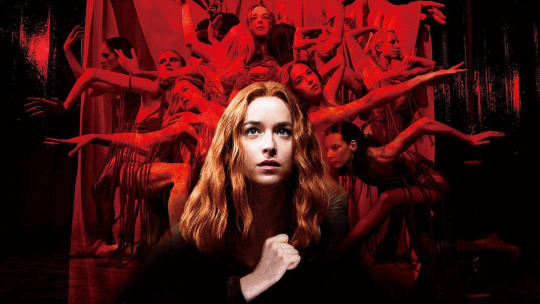
Dakota Johnson (Purvashada Rising) stars in Suspiria which is about a young woman who accidentally finds herself in a cult/witches' coven.
Some very well known people who could be called evil personified are also Purvashada natives, such as Hitler and Harvey Weinstein (Purvashada Moon)
Purvashada natives love to play the devil's advocate, the quality we most associate with a monkey (this nak's Yoni animal) is its playfulness. Purvashada natives do things simply for the heck of it/thrill of it. There is no sense of purpose or direction to which their Venusian qualities are directed. Thus it represents the dark side of Venus. When all other desires are fulfilled and the only thing left is to seek Moksha, the nakshatra tends to exhibit the Trickster archetype.

the 2002 movie May, stars Angela Bettis (Purvashada stellium; sun, mercury, jupiter and rahu) and depicts the cruel and sinister side of Venus very well (trigger warning; this movie is VERY gore-y), its about a woman who ritually murders several people who she did not feel loved by (to put it simply).
While Bharani being the initiatory Venus nak is Venus at its most ethical, all sense of "right and wrong" evaporates into thin air as the Venusian journey progresses. In Purvaphalguni, this manifests as a desire for sex itself but in Purvashada, the native is dissatisfied with mere bodily union, it seeks something bigger. This theme of union being impossible/not satisfying can be seen in the works of many Purvashada natives. The desire to delve into the occult arises out of a desire to transcend ordinariness, find something that addresses the darkness and uncover the truth within it.
The Venusian journey passes through the sign lords of Mars, Sun & Jupiter; beginning as a soldier, working out of a sense of duty, reaching its height in the individualistic Sun, seeking pleasure merely for one's own sake and finally concluding itself in the expansive Jupiter where things get unusual. Venus is a complicated planet full of contradictions and combining its energy with that of Jupiter which expands beyond control means the darkness of Venus makes itself seen in ways we don't quite see in the same way in the other naks.
The tattvas of these naks are earth, water and air respectively. It originates in a very grounded fashion, full of practical concerns, then dissolves itself entirely in the formless water before becoming the element that's hardest to narrow down; air.
Bharani with Aries, Purvaphalguni with Leo and Purvashada with Sagittarius and all these signs are traditionally perceived as masculine and the Fire element in general is understood as masculine. The opposite of fire is water, which is feminine (water being related to the Moon, which is a yin planet) whereas fire is related to the Sun which is a yang planet.
it is the combination of masculine with feminine that heightens the effect of the other. a highly masculine man or a highly feminine woman have integrated the opposite energy within them fully; they are internally almost androgynous . they dont lack the influence of the other
in Bharani, we have the womb and creation, in Purvaphalguni we have the bed, in Purvashada, we have the winnowing basket, separating the husk from the grain, depicting the different functions of Venus; as source, hedon, and order.
#sidereal astrology#astrology notes#vedic astro notes#vedic astrology#nakshatras#astrology#astrology observations#astroblr#astro notes#astro observations#venus#bharani#purvaphalguni#purvashada
394 notes
·
View notes